
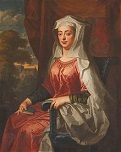
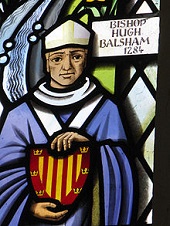

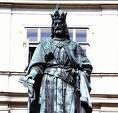

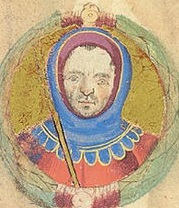
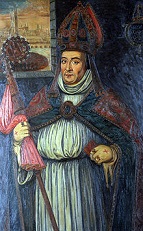
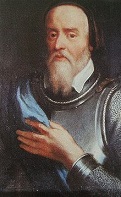




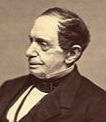

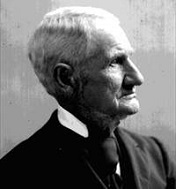




















TLW's Universityscope™ (University Historyscope) |
By T.L. Winslow (TLW), the Historyscoper™ |
© Copyright by T.L. Winslow. All Rights Reserved. |
Original Pub. Date: Aug. 2, 2016. Last Update: July 11, 2020. |



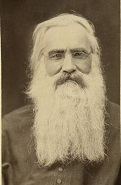
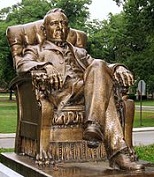






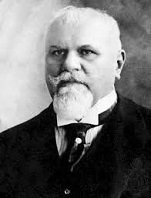

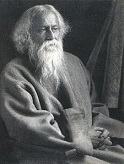

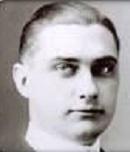
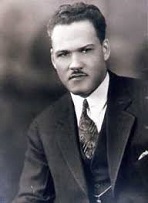

Westerners are not only known as history ignoramuses, but double dumbass history ignoramuses when it comes to university (Lat. "universitas magistrorum et scholarium" = "community of teachers and scholars") history. Since I'm the one-and-only Historyscoper (tm), let me quickly bring you up to speed before you dive into my Master Historyscope.
About 1000 B.C.E. Takshashila U. is founded in Taxila ("city of cut stone") in Rawalpindi, Punjab, India, becoming the world's first university, growing to 10.5K students from India, Greece, Babylon, China, Phoenicia, Arabia, and Syria studying 68 different courses; teachers incl. Kautilya, Panini, Jivak, and Vishnu Sharma; after invading Punjab, Alexander the Great takes several scholars back with him to Greece; the Hephthalites (Hunas) destroy it ca. 460 C.E.


In 387 B.C.E. Socrates' 40-y.-o. student in Athens, Greece Plato (-427 to -327) founds the Academy in the Grove of Academe (once the property of an Athenian named Academus who got his name from an ancient hero?), becoming the first univ. in the Western world; it is closed in 529 C.E. by Christian Byzantine Emperor Justinian I - because the Roman Catholic Church has the Truth hence who needs it?
In 70 C.E. the Romans build the small Duroliponte Fort on Castle Hill near modern-day Cambridge, England on the Cam River 50 mi. N of London (modern-day pop. 131K/280K), which becomes a town in about 120; after the Romans leave Britain in 410, the Anglo-Saxons begin occupying it, founding Grantebrycge (Granta-bridge) on the border between East Anglia and Middle Anglia; in 875 the Vikings occupy it, causing the pop. to grow, shifting from Castle Hill on the left bank to Quayside on the right bank; in the 10th cent. the Saxons return to power, striking coins calling the town "Grant"; in 1068 William I the Conqueror builds a castle on Castle Hill; the first town charter is granted by Henry I in 1120-31, giving it a monopoly on waterborne traffic and tolls; in 1209 Cambridge U. is founded by students running from hostile townsfolk in Oxford; the Romans build their first irrigation system in Britain around Duroliponte.

In 71 C.E. Quintilian (35-95) becomes the first public salaried Roman professor when Vespasian appoints him to a chair of literature and rhetoric; his students incl. Pliny the Younger and two grandnephews of Domitian; he exempts all teachers of grammar and rhetoric from taxes, and creates a new class of prof. civil servants from the business community; the Stoics oppose his regime. Vespasian begins consolidating the E frontier against Armenia and Parthia.
Did the man who college invented go to college? In 859 C.E. the U. of (al-Qarawiyyin) (al-Karouine) (Karueein) Al Quaraouiyine is founded in Fez, Morocco by wealthy Kairouan, modern-day Tunisia-born widow Fatima al-Fihri al-Qurashiyya (800-80) as a madrasa, becoming the oldest univ. to survive to modern times, and the first to award degrees.
In 872 C.E. Alfred the Great allegedly founds Oxford U. in Oxfordshire, England; too bad, the first definite mention is in 1096.
About 900 the city of Oxford, England (modern-day pop. 170K/244K) is founded as a ford for oxen in the Thames River called Oxenforda, becoming a major military frontier town between the kingdoms of Mercia and Wessex and evolving into a center of learning and center of pop. of the county of Oxfordshire in SE England, with Oxford U. first mentioned in 1096; ; in 1191 it is chartered as a city, going on to become known as "the city of dreaming spires" (Matthew Arnold).
In the 10th cent. C.E. the city of Timbuktu (Tombouctou) (Tuareg "Tin Abutut" = lady with the big navel) on the S edge of the Sahara Desert 10 mi. N of the main channel of the Niger River (modern-day pop. 54K) is founded by Tuareg leader Imashagan, along with the Sankore Madrasah Islamic univ. in 989, which becomes a major center of learning during the reign of Mansa Musa in 1307-32, reaching 10K pop. in the 13th cent. and 50K in the 16th cent.; in 1468 it is absorbed by the Songhai Empire; in 1591 it is occupied by a Moroccan army, who move their capital there from Gao; in 1612 the new ruling class called the Army establishes independence from Morocco; the French take over in 1893; in 1960 it becomes part of the Repub. of Mali.
In 962 the U. of Parma is founded by a decree of HRE Otto I as a school for notaries; faculties of law and medicine are added in the 13th cent.
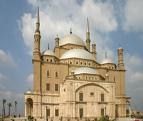
In 970 Al-Azhar (Arab. "most resplendent") Mosque in Cairo, Egypt is built by the Fatimids, becoming the first mosque in Cairo, churning out Shiite propaganda until 1171, when it is turned into Al-Azhar U., which becomes the #1 Sunni religious college.

In 1079 reformer Pope (1073-85) (St.) Gregory VII (Hildebrand) (1015-85) issues a decree regulating cathedral schools, paving the way for independent univs.
The reason that academics are full of bologna? In 1088 after city laws impose collective punishments on each "nation" of foreigners, causing them to turn into collective bargaining groups and end up hiring scholars to school them, the U. of Bologna in Italy is founded to study the balogna of the law independent of the balogna of the ecclesiastical schools, becoming the oldest continuously-operating univ. in Europe (world?) ("Alma Mater Sudiorum"), becoming the first to use the term "universitas"; in 1158 it receives a royal charter from HRE Frederick I Barbarossa; in 1219 it becgins training physicians, competing against the U. of Padua; it goes on to produce Dante, Petrarch, Torquato Tasso, Vesalius, Galvani et al. as students and faculty; motto: "Petrus ubique pater legum Bononia mater" (St. Peter is the father of all places and Bologna the master of the law").
In 1096 the first teaching in Oxford, England in SC England (Oxfordshire); in 1167 Henry II bans English students from attending the U. of Paris, causing them to boost its fortune - more affordable but a little too close to mum and dad?

About 1100 French #1 scholastic philosopher Peter Abelard (1079-1142) becomes a student at the cathedral school of Notre-Dame de Paris, becoming rivals with his teacher William of Champeaux; about 1110 he establishes a school on the Montagne Saint-Genevieve (Sainte-Genevičve) on the left bank of the Seine River overlooking Notre-Dame de Paris and its cathedral school before moving to Laon in 1113 then becoming master of Notre-Dame in 1115; about 1120 after Notre-Dame proves too small, teachers and students take up residence there, becoming the start of the Latin Quarter and the U. of Paris; after falling in love with young hot Heloise and ending up getting castrated, Abelard returns in 1136.
In 1134 the U. of Salamanca in Salamanca (120 mi. W of Madrid), Castile and Leon, Spain is founded, becoming the oldest univ. in Spain; in 1218 it receives a royal charter from Alfonso IX; on May 8, 1254 Alfonso X grants it the title of university, which is recognized in 1255 by Pope Alexander IV; "Quod natura non dat, Salamantica non praestat" (What Nature does not give, Salamanca does not lend); "Multos et doctissimos Salmantica habet" (Many and very versed Salamanca has); in 1940 after the Spanish govt. fires the faculties of canon law and theology, Pope Pius XII founds the Pontifical U. of Salamanca.
In 1170 the guild of masters, germ of the U. of Paris is recognized by Louis VII of France, and the French intellectual center begins shifting from Chartres to Paris as its humanistic bishop (1176-80) John of Salisbury (1115-80) and main brain man Thierry (Theodoric) of Chartres (1150-) get long in the tooth; at first the univ. movement is controlled by the Church, but it's just a matter of time before it becomes a hotbed of heresy, and ultimately one of the Church's greatest enemies - monkey see monkey do?
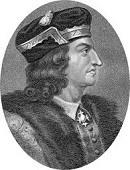
On Sept. 18, 1180 king (since Aug. 1, 1137) Louis VII the Not So Younger (b. 1120) dies, and on Sept. 18 his really young Latin-less 14-y.-o. miserable crafty hunchbacked son (no time for education now?) Philip II Augustus (1165-1223) becomes Capetian king #7 of France (until July 14, 1223); in his long reign he strives to enlarge the French royal domain (which is why they call him Augustus, although they probably mean the Augmentor?), eventually acquiring Normandy, Maine, Anjou, and Touraine at the expense of ninny King John I of England, and creating the bailii, bureaucrats that combine the functions of the English sheriffs and itinerant judges, without their roots in the local community, replacing the corrupt prevots; Philip II goes on to become known as the Maker of Paris, paving and walling it, starting construction of the Louvre, and issuing a charter for the U. of Paris, which evolves into a nice place to get a traditional liberal education (like he didn't have time for) (while Oxford tries to keep up with it?); he makes a 6-year alliance with Henry II of England so that he can take on Philip of Artois and the counts of Champagne and crush the baronial league; seeing his chance, duke Hugh III of Burgundy (1142-92) gets several nobles to change allegiance to him, pissing-off Philip II and causing him to invade Burgundy and siege Chatillon until Hugh yields, pays a high ransom for his captured son, and gives up his territorial ambitions, ending up going on the Third Crusade and becoming the most trusted ally of Richard Lionheart of England.

In 1200 the U. of Paris is chartered by French Capetian king (1179-1223) Philip II Augustus (1165-1223); in 1210 Pope Innocent III permits its teachers to form a corporation, and in 1212 gives them a degree of independence from the bishop of Paris; in 1215 it is chartered by Pope Innocent III, who on Nov. 16, 1219 prohibits the teaching of civil (Roman law), permitting only canon law to be taught; in Dec. 1219 new pope Honorius III supports the univ. in its conflict with the bishop of Paris; on Feb. 26, 1229 street battles between students and sgts. of the provost of Paris escalate, and on Apr. 15 the univ. temporarily vacates the city in protest, while students launch the first major student strike in history over the price of wine in a tavern in the Faubourg Saint-Marcel, with some leaving for Oxford and Cambridge in England; the name "Picard" originates as an academic epithet applied to its quarrelsome students.
In 1200 the 800 y.-o. Buddhist U. of Nalanda in India (founded about 400) is destroyed by Muslims under Muhammad Bakhtiyar Khilji (-1206), the first Muslim conqueror-ruler of Bengal and Bihar, whose missionaries make a large number of converts while Buddhism declines in E India.
In 1209 a student at Oxford U. kills a woman and flees, and his roommates, vainly claiming clerical immunity are hanged in his stead, causing teachers and students to leave Oxford for close (but not too close) (80 mi.) Cambridge(shire) ("bridge over the Cam or Granta River") in protest until a new agreement is made with the town in 1214; when some like it and decide to stay, the second great English U. is born, eventually forming the Oxbridge nexus of English eggheads - like switching from Ford to Chevy but staying with Detroit?
In 1214 the papal legate to England orders a chancellor chosen for Oxford U. to preside over a self-governing guild of masters; like the U. of Paris, Oxford U. is divided into "nations", the North for Scottish students and the South for Irish and Welsh students.
On Mar. 7, 1219 Pope Honorius III approves the religious congregation of Val des Ecoliers (Valley of the Scholars) at the U. of Paris.

About 1220 after a large group and students and professors walk out of the U. of Bologna in search of more academic freedom, HRE Frederick II (1194-1250) founds the U. of Padua in Italy to teach law and theology, followed in 1222 by medicine, and by 1399 it divides into two schools, one for civil and canon law, and the other for medicine, grammar, rhetoric, dialectic, philosophy, and astronomy; in a mere three cents. it becomes home to one of the first botanical gardens in Europe (1545), going on to produce giants incl. Andreas Vesalius and Galileo Galilei; in 1595 its anatomical theater begins performing public dissections.
On June 5, 1224 HRE Frederick II ("Grand Frederigo") founds the U. of Naples Federico II, becoming the oldest public non-religious univ. on Earth, dedicated to training secular admin. staff; alumni incl. St. Thomas Aquinas.
In 1228 the world's first publicly-funded univ. is founded in Vercelli, Italy in Piedmont, N Italy; closed in 1372.

How do you approach the Word of God? You don't? Progresso, what a soup of holy words shouldn't be? In 1229 fter the first hand-copied partial translations of the Bible by the pesky Albigensians begin appearing, the (non-ecumenical?) Council of Toulouse forbids lay persons from reading the Bible, to be enforced by the Papal Inquisition, run mainly by the Dominicans (is that a Bible in your pants or are you just happy to see me?); "Search the Scriptures, for in them ye think ye have eternal life, and they are they which testify of me" (John 5:39); "Use of the vernacular [would mean] demolition of a language barrier that safeguarded the clergy's exclusive dominion over religious matters" (Massimo Firpo); meanwhile the U. of Toulouse is founded in Toulouse, France, becoming the 2nd oldest univ. in France and one of the oldest Euro univs. to survive to modern times; it is later renamed in honor of 1912 Nobel Chem. Prize winner Paul Sabatier (1854-1941).
In 1229 students in Paris launch the first major student strike in history over the price of wine in a tavern in the Faubourg Saint-Marcel.
About 1229 univs. in Italy begin the systematic training of physicians.
On Apr. 13, 1230 after the big strike of 1229, Pope Gregory IX issues the bull Parens Scientiarum (Mother of Sciences), formally recognizing the autonomy of his alma mater the U. of Paris; "[T]he papal bull..., which stipulated that anyone admitted to be a teacher in Toulouse had the right to teach everywhere without further examinations (ius ubique docendi), in time, transformed this privilege into the single most important defining characteristic of the university and made it the symbol of its institutional autonomy." (Kemal Guruz)

Even the thirteenth century had its missile gap? In 1249 Roger Bacon (1219-92) argues for a scientific curriculum at Oxford U., causing Univ. College to be founded by a bequest of 310 marks in the will of archdeacon William of Durham (-1249) (who dies in Rouen, Normandy), becoming the earliest college at Oxford established by private benefaction; it starts out with four fellows who are only allowed to study theology, and doesn't accept undergrads until the 16th cent. - everything from ice to steam to Japanese massage?
In 1250 four nat. colleges are established at Paris U.
In 1253-7 the Sorbonne in Paris is founded by court chaplain (to Louis IX) and Roman Catholic theologian Robert de Sorbon (1201-74) as the Community of Needy Theological Students (La Communaute des Pauvres Maitres Etudiant en Theologie), a residence hall for needy theological students; by the end of the cent. it is called La Sorbonne, becoming part of the U. of Paris, which in 1970 is split into 13 autonomous univs. In 1271 the Sorbonne adds the College de Calvi (Little Sorbonne) to give preliminary prep. in the humanities and philosophy.

In 1263 Balliol College at Oxford U. is founded with guidance from the bishop of Durham by Devorguilla of Galloway (1210-90) and her husband (since 1223) John I de Balliol (Baliol), 5th Baron de Balliol (-1268), parents of future Scottish king John I Balliol; alumni are known for possessing "the tranquil consciousness of an effortless superority", and incl. economist Adam Smith, PM Harold McMillan, and PM Edward Heath.

In 1264 Merton College at Oxford U. is founded by Walter de Merton (1205-77), bishop of Rochester and former chancellor to Henry III and Edward I, becoming the first modern college with its self-governing org., with instruction within its walls, going on to become a center for scientific studies, esp. mechanics, nurturing Roger Bacon, Thomas of Bradwardine, Robert Grossteste, Richard Swineshead, et al., and serving as a model for future colleges at Oxford and Cambridge - yah, baby?
By 1270 there are univs. throughout Europe, incl. Cambridge, Oxford, Paris, Orleans, Toulouse, Palencia, Salamanca, Seville, Montpelier, Vicenza, Padua, Reggio, Bologna, Rome, Naples, Arezzo, and Salerno; later more univs. are founded in Coimbra, Lisbon, Valladolid, Huesca, Cerida, Cahors, Perpignan, Avignon, Grenoble, Angers, Vercelli, Pisa, Florence, Ferrara, Treviso, Perugia, Heidelberg, Cologne, Erfurt, Prague, Vienna, and Ofen.

In 1284 Peterhouse College is founded at Cambridge U. by Hugo (Hugh) de Balsham (-1286), bishop of Ely, and chartered by Edward I, becoming its oldest college.

In 1289 Pope (1288-92) Nicholas IV (1227-92) issues a bull combining several schools dating back 100+ years into the U. of Montpellier in Montpellier, France on the Lez River 31 mi. SW of Nimes, with the school of medicine starting out on the wrong foot by claiming that the Black Death is caused by a miasma entering open body pores, arguing against bathing; in 1529 it expels student Nostradamus for having worked as an apothecary; alumni later incl. Rabelais and Paul Joseph Barthez; in 1593 it founds the Jardin des Plantes de Montpellier, becoming the first botanical garden in France.
In 1291 Durham College at Oxford U. is founded by Benedictine monks from Durham Abbey; it is closed by Henry VIII in Mar. 1545.

On Apr. 20., 1303 the Sapienza U. of Rome is founded by Pope (1294-1303) Boniface VIII (1230-1303) via the bull In Supremae Praeminentia Dignitatis, "in that Rome may become the fruitful mother of science"; in 1431 Pope Eugene IV reorganizes it, creating schools of law, medicine, philosophy, and the theology, paying for it with a wine tax; it is destroyed during the 1527 Sack of Rome, and rebuilt in 1535 by Pope Paul III; in 1703 Pope Clement XI founds a botanical garden on the Janiculum; in 1870 it goes secular, going on to become the largest Euro univ. by enrollments in modern times; Pope Boniface VIII also founds the U. of Avignon in Avignon, France, starting out with faculties of civil and ecclesiastical law, followed in 1413 by theology, followed in the 16th cent. by medicine; it is closed in 1792 during the French Rev.
On Sept. 3, 1308 Pope Clement V issues the bull "Super specula", founding the U. of Perugia in Italy as a studium generale, with a school of arts, adding schools of medicine and law about 1200; on Aug. 1, 1318 Pope John XXII grants it the authority to confer degrees in civil and canon law, followed on Feb. 18, 1321 in medicine and arts; on May 19, 1355 HRE Charles IV raises it to an imperial univ.; on Oct. 11, 1371 Pope Gregory XI founds a faculty of theology, which is suprressed in 1811; on Aug. 27, 1824 Pope Leo XII makes the Collegio Pio the chief college; in 1860 after the unification of Italy, it is refounded as a state-run univ., becoming one of the top univs. in Italy after WWII.
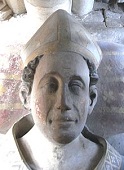
In 1314 Exeter College at Oxford U. is founded by bishop of Exeter (1308-26) Walter (de) Stapledon (1261-1326) to train clergymen; alumni incl. J.R.R. Tolkien.
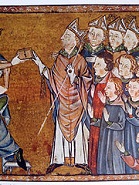
In 1314 the College de Montaigu in Normandy, France is founded by Rouen archbishop (1311-9) Giles I Aycelin (Aicelin) de Montaigu (Montaigut) (1252-1318) for poor students from distant locations; it later moves to the U. of Paris, going on to produce famous students inc. Erasmus of Rotterdam, John Calvin, John Knox, and Ignatius of Loyola.
In 1322 Gian Galeazzo Visconti closes the U. of Parma; after being created a univ. in 1412 by Niccolo III d'Este in 1412, it opens and closes several times during the next cent.
In 1320 the U. of Dublin in Ireland is founded in connection with St. Patrick's Cathedral, but never receives an endowment, and limps along until Henry VIII shuts it down, after which it is reestablished in 1592.
In 1321 the U. of Florence (originally the Studium Generale) in Italy is founded by the Repub. of Florence; in 1349 Pope Clement VI recognizes it, and it becomes the first Italian faculty of theology, becoming an imperial univ. in 1364; in 1473-1515 it moves to Pisa; the modern univ. is founded in 1859, and recognized by the Italian parliament in 1923.

In 1324 Oriel (King's) College at Oxford U. is founded by English king (1307-27) Edward II (1284-1327) as the College of the Blessed Mary, becoming the oldest royal foundation in Oxford; in 1329 a bldg. called La Oriole is presented to the college, causing the eventual name change by 1349 - smart choice for Edward II to found Oral College?

In 1326 Clare College at Cambridge U. is founded as Univ. Hall, becoming the 2nd oldest college of Cambridge to survive to modern tumes; in 1338 after an endowment from Elizabeth de Clare (de Burgh) (1295-1360) it is refounded, becoming known for its chapel choir and its garden on the Backs overlooking the Cam River.

In 1341 The Queen's College at Oxford U. is founded by Robert de Eglesfield (d'Eglesfield) (1295-1349), chaplain to Edward III's wife Philippa of Hainault; it goes on to build neoclassical campus bldgs. designed by Sir Christopher Wren and Nicholas Hawksmoor.

On Sept. 3, 1343 the U.of Pisa is founded in Pisa, Italy by the bull In Supremae Dignitatis by Pope (1342-52) Clement VI (1291-1352). On Nov. 1, 1543 the U. of Pisa (founded 1343) is officially refounded by Cosimo I de' Medici, who in 1544 founds the Orto Botanico di Pisa, becoming the first univ. botanical garden in Europe.

On Apr. 7, 1348 Bohemian king Charles IV of Luxembourg (1316-78) makes official the work of his father John of Luxembourg, founder of the Luxembourg dynasty in Bohemia, officially creating the Crownlands of Bohemia, consisting of the original kingdom of Bohemia plus adjoining lands (Moravia, Silesia, Upper and Lower Lusatia); on Apr. 7 he issues a Golden Bull founding the U. of Prague (Charles U.), the first univ. in C Europe, making it a thrilling intellectual center and turning Prague into a chief city of pockmarked Europe.
In 1348 Gonville and Caius College at Cambridge U. is founded by Edmund Gonville (-1351), rector of Terrington St. Clement in Norfolk; after he dies leaving it broke, his executor Bishop William Bateman of Norwich transfers it to Trinity Hall, and renames it Hall of the Annunciation of the Blessed Mary; it is refounded in 1557 by by John Caius (Kays) (1510-73) (pr. like keys), royal physician to Edward VI, Mary I, and Elizabeth I, John Caius (Kays) (1510-73), who changes his name to the Greek spelling Caius.
In 1350 Trinity Hall college is founded at Cambridge U. by William Bateman (1298-1355), bishop of Norwich to replenish the priesthood after the Great Plague.
In 1352 Corpus Christi College ("House of Scholars of Corpus Christi and the Blessed Virgin Mary") is founded in Cambridge by the guilds of the Blessed Virgin Mary and Corpus Christi, becoming the only college founded by Cambridge townspeople; it later becomes known as St. Benet's for its chapel; its members incl. 13 fellows, 6 scholars, and 24 scholarship holders, and it goes on to produce prelate Matthew Parker et al.; Oxford's Corpus Christi College is not founded until 1516.
On Oct. 5, 1354 Giovanni Visconti (b. ?) dies, and his nephews Matteo II, Bernabo, and Galeazzo II divide and rule the domains jointly while plotting to stab each other in the back; Matteo gets Lodi, Piacenza, Parma and Bologna; Bernabo gets the E side (Bergamo, Brescia, Cremona, Crema); Matteo and Galeazzo become known for harsh rule and ostentatious patronage of learning and art, with Galeazzo backing Plutarch and founding the U. of Pavia in 1361.

On Mar. 12, 1365 the U. of Vienna, the oldest univ. in the German-speaking world is founded by Austrian Hapsburg Duke Rudolf IV (1339-65) in another effort to keep up with Charles U. in Prague (1347).
In 1379 the U. of Erfurt in Erfurt, Thuringia 130 mi. SW of Berlin is chartered by Antipope Clement VIII, then rechartered in 1389 by Pope Urban V, opening in 1392 and going on to become a center of humanism with the largest univ. enrollment in Germany until it is closed in 1816; it is reopened in 1994, making it the oldest and youngest univ. in Germany; alumni incl. Martin Luther.

In 1379 New College (The Warden and Scholars of St. Mary's College of Winchester in Oxford) is founded at Oxford U. by Winchester bishop William of Wykeham (1320-1404), along with New (St. Mary's College School) to educate its 16 chapel choristers.

In 1382 Winchester College boarding school for boys is founded in Winchester, Hampshire, England by bishop William of Wykeham (1320-1404); the first 70 poor scholars enter the school in 1394; it is founded in conjunction with New College, Oxford U. as a feeder, becoming a model later followed by Eton School and King's College, Cambridge U., and Westminster School and Christ Church, Oxford U. and Trinity College, Cambridge U.

In 1386 Heidelberg U. (Ruprecht-Karl U. of Heidelberg) is founded in Heidelberg, Baden-Wurttemberg, Germany by Palatinate elector Rupert I, becoming Germany's first univ., and the 3rd univ. in the Holy Roman Empire after the U. of Prague (1348) and U. of Vienna (1365); the first rector is religious scholar Marsilius von Inghen (1330-96).

In 1388 the U. of Cologne in Cologne, Germany is founded with a charter signed by Pope (1378-89) Urban VI (1318-89); classes open on Jan. 6, 1389; it is closed by the French in 1789 and reopened in 1919.

On Mar. 4, 1391 the U. of Ferrara in Ferrara, Emilia-Romagna, Italy is founded by Marquis Alberto V D'Este (1347-93) with permission from Pope Boniface X; on Oct. 18 the Studium Generale opens, offering courses in law and theology; in 1871 after Italian unification it becomes a free univ., teaching law, mathematics, medicine, and veterinary medicine (until 1876); in 1946 after WWII it becomes state-supported, growing from 500 students in 1914 to 16K students.
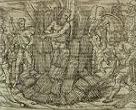
On Jan. 18, 1409 after Jan Hus' preaching at the U. of Prague causes an uproar among the Germans in the faculty and student body, causing the Hussites to send Jerome of Prague (1379-1416) to Wenceslaus IV to ask him to change the constitution of the univ., and Poland, Bavaria, and Saxony oppose the the emperor's request to remain neutral between the two rival popes of the Great Schism, Wenceslaus IV issues the Decree of Kutna (Kutná) Hora (Kuttenberg), giving the Czech nation three votes in the elections to the faculty of Prague U. and the other three only one vote each, after which Hus is voted rector of Prague U., causing deposed rector Johannes of Munsterberg and 5K-25K students and profs. to leap and zigzag out and found Leipzig U. in Saxony, which is backed by a bull issued by new Antipope Alexander V on Sept. 9, and later becomes the alma mater of superbrain Gottfried Wilhelm von Leibniz.
In 1410-13 St. Andrews U., Scotland's first univ. is founded by Avignon Antipope Benedict XIII for Augstinian clergy.
In 1425 Roman Catholic Louvain (Leuven) U. is founded in Brabant Province, Belgium, becoming Belgium's largest univ.; it is originally housed in the Cloth Workers' Hall (built 1317).
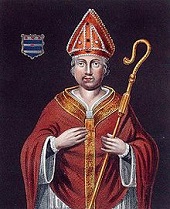
On Oct. 13, 1427 Lincoln College (College of the Blessed Mary and All Saints, Lincoln) at Oxford U. is founded by Bishop (1419-) Richard Fleming (1385-1431) of Lincoln to combat the Lollard teachings of John Wycliffe, as "a little college of true students of theology who would defend the mysteries of Scripture against those ignorant laymen who profaned with swinish snouts its most holy pearls"; in 1946 the Mensa high-IQ society is founded there.
In 1428 Magdalene College (pr. MOD-lin) is founded at Cambridge U. as a Benedictine whorehouse, er, hostel, eventually (1472-83) called Buckingham College then the College of St. Mary Magdalene in 1542, with the motto "garde ta foy" (guard the faith); Samuel Pepys later becomes an alumnus.
In 1431 the U. of Poitiers is founded in Poitiers, France by Pope Eugene IV and chartered by Charles VII, becoming #2 after the U. of Paris in the 16th cent.; alumni incl. Francis Bacon, Joachim Du Bellay, Rene Descartes, and Francois Rabelais; it is closed during the 1789 French Rev., and reopened in 1796.
In 1434 the U. of Catania in Catania, Sicily is founded, becoming the first univ. in Sicily.
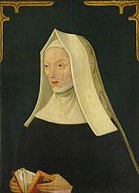
In 1437 Christ's College at Cambridge U. is founded by clergyman William Byngham (Bingham) (1390-1451) as God's House to train grammar school teachers, becoming the first known secondary school training college; in 1505 it is refounded by Lady Margaret Beaufort, Countess of Richmond and Derby (1443-1509), mother of Tudor king Henry VII; alumni later incl. John Milton and Charles Darwin.

In 1438 All Souls College at Oxford U. is founded by Canterbury archbishop (since 1414) Henry Chichele (Chicheley) (Checheley) (1364-1443), with a warden and 40 fellowships (24 in arts, philosophy, and theology, 16 in civil or canon law) reserved for scholars who must take Holy Orders; Codrington Library is completed in 1751; undergrads are eliminated in the 19th cent.
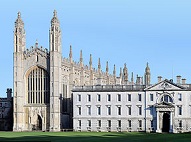
In 1440 Eton College (School) (King's College of Our Lady of Eton Beside Windsor) is founded in Eaton, near Windsor, Buckinghamshire, England by Henry VI as a charity school to give free education to 70 boys to groom them for King's College (College of St. Nicholas), which he founds next year in Cambridge, with special privileges exempting it from the jurisdiction of Cambridge U., the archbishop of Canterbury, and the bishop of Ely (until 1857); King's College goes on to become "the chief nurse of England's statesmen", graduating 18 British PMs; Eton boys end up wearing a distinctive formal dress with waist-length jacket and top hat; the late Gothic King's College Chapel is built in 1446-1515, with large stained glass windows added in 1531, and an early Renaissance rood screen in 1532-36, containing the world's largest fan-vault, becoming a symbol of the city of Cambridge - I love a boy in a short skirt and a waist-length jacket?
On June 7, 1441 Bordeaux U. in British-owned Aquitaine, France is founded by Pope Eugene IV.

In 1458 Magdalen College (pr. MOD-lin) in Oxford, England is founded by Winchester bishop (1447-86) William Waynflete (Patten) (1398-1486); it is called Magdalen Hall until 1458; its boys' choir becomes a keeper, as does its deer park next to the Cherwell River.
In 1463 the U. of Bourges in France is founded by Louis XI, later producing John Calvin, Jacques Amyot, and Theodore de Beza; closed during the French Rev. (1789).

In 1472 the U. of Munich (originally U. of Ingolstadt) in Ingolstadt, Germany is founded by Duke (since 1450) Ludwig IX the Rich of Bavaria-Landshut (1417-79), modeled after the U. of Vienna, with the goal the propagation of the Christian faith; in May 1800 it is moved to Landshut by Maximilian I of Bavaria, who in 1802 renames it Ludwig Maximilian U. by Maximilian I of Bavaria; in 1826 it is moved to Munich by Ludwig I.
In 1473 St. Catherine's College (originally Katharine Hall until 1860) at Cambridge U. is founded, receiving a charter from Edward IV in 1475.
In 1474 the U. of Saragossa (Zaragoza) in NE Spain is founded, going on to distinguish itself for mediocrity?
In 1477 the U. of Mainz, whose papal approval was begun by Mainz archbishop Adolf II of Nassau is donated to the city by his successor (since Nov. 1475) Mainz archbishop Diether von Isenburg (1412-82).
In 1477 the U. of Tubingen (Tübingen) is founded in Tubingen, Baden-Wurttemberg, Germany by Renaissance-loving Eberhard I, 1st Duke of Wurttemberg (1445-96), becoming one of the five classical univ. towns in Germany (incl. Freiburg, Gottingen, Heidelberg, and Marburg), and the #1 German univ. for the study of theology and religion.
In 1477 Uppsala U. in Uppsala, Sweden is founded via a bull by Pope Sixtus IV, who grants it the same freedoms and privileges as the U. of Bologna, becoming the oldest univ. in Scandinavia, not counting the Academy of Lund (founded in 1425).
In 1479 the U. of Copenhagen is founded by Christian I of Denmark, becoming the 2nd oldest univ. in Scandinavia after Uppsala U. (1477).
On Aug. 31, 1492 German humanist scholar Conradus Celtis (Conrad Celtes) (1459-1508), whom HRE Frederick III had appointed poet laureate at the urging of Frederick of Saxony gives a famous speech to students in Ingolstadt, calling on Germans to rival the Italians in letters and learning.
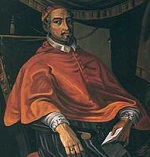
In 1495 U. of Santiago de Compostela in Santiago de Compostela, Galicia, Spain is founded, and approved in 1504 by Pope Julius II; it takes until 1526 for Pope Clement VII to issue a bull for it screation; in 1555 Dominican Cardinal Juan Alvarez de Toledo (1488-1557) begins separating it from purely religious instruction, adding scientific studies.

In 1496 Jesus College at Cambridge U. is founded by Rochester bishop John Alcock (1430-1500) on the ruins of the 12th cent. Benedictine nunnery of St. Mary and St. Radegund; the logo is the cockerel; alumni incl. Canterbury archbishop Thomas Cranmer - he's bragging?
In 1498 the U. of Palermo in Italy is founded.
In 1499 the U. of Oxford begins issuing degrees in music.

In 1499 after Pope Alexander VI issues a papal bull on Apr. 13, Spanish Cardinal Francisco Jimenez (Ximenes) de Cisneros (1436-1517) founds the U. of Alcala (Alcalá) de Henares in Alcala de Henares, Spain on the Henares River E of Madrid as Completense U. (named after the 1st cent. B.C.E. town of Complutum), becoming the first city designed solely as the seat of a univ., where he and his scholars Hernan Nunez de Toledo y Guzman (Hernán Núńez de Toledo y Guzmán) (1475-1553), Diego Lopez de Zuniga et al. begin a big Bible trans. project in 1502, finishing the New Testament in 1514 and the Old Testament in 1517, after which bureaucratic machinery takes until 1520 for Pope Leo X to sanction it, and more foulups hold it up until 1522; Miguel de Cervantes is born there in 1547; the univ. moves to Madrid in 1836, then moves back in the 1970s.
In 1500 the U. of Valencia in Spain is founded.
In 1501 the U. of Santiago in Spain is founded.
In 1502 the U. of Wittenberg is founded in Wittenberg, Saxony-Anhalt, Germany by elector Frederick III the Wise, becoming a hotbed of the Protestant Reformation, with alumni incl. Martin Luther and Philipp Melanchthon, and Luther's house the Lutherhaus becoming part of the campus; Shakespeare's Prince Hamlet becomes a student :); in 1817 it merges with the U. of Halle (founded 1691).
In 1502 Henry VII's mother Margaret, countess of Richmond and Derby founds professorships of divinity at Oxford and Cambridge.
In 1502 Aldus Manutius of Venice founds the New Academy for Greek classical scholars, which counts as members Desiderius Erasmus (1466-1536) (in Italy from 1506-9) and Thomas Lincare, with rules written in Greek; the revival of Greek studies in Europe is led by Erasmus, who corresponds with over 500 scholars and politicians, giving advice and unfreezing the gloomy Roman Catholic atmosphere; too bad, Erasmus won't begin publishing his hit books dissing monasticism and scholasticism until he masters Latin later in this decade (around age 40).
In 1504 Pope Julius II issues a bull establishing the U. of Santiago de Compostela in Galicia, N Spain.
In 1505 the U. of Seville in Spain is founded as the Colegio Santa Maria de Jesus.
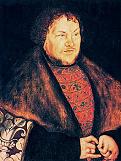
In 1506 the U. of Frankfurt an der Oder (European U. Viadrina Frankfurt), the first state univ. in Brandenburg is founded by Hohenzollern prince-elector (1499-1535) Joachim I Nestor (1484-1536); too bad, he backs the Roman Catholic Church all the way against the pesky Lutherans, then watches his wife Anna of Brandenburg and her hubby king Christian III of Denmark go Protestant, along with Brandenburg, and ends up fleeing to Saxony in 1528; the univ. is transferred to Breslau in 1811.
In 1506 the U. of Urbino in Urbino, Italy is founded.
In 1507 secular Hebrew studies are introduced in French and German univs.
In 1509 Brasenose College (Ger. "Brassenhuss" = brewhouse) at Oxford U. is founded by lawyer Sir Richard Sutton (-1524) and Lincoln bishop (1496-) William Smyth (Smith) (1460-1514) on the site of a brewery, becoming the last of the pre-Reformation colleges; future students incl. author Richard Burton, antiquarian Elias Ashmole, and John Foxe.

In 1517 Corpus Christi College in Oxford U. is founded by English prelate-statesman Richard Foxe (1448-1528) for the advancement of classical education; next year its chapel is built, complete with an altar designed by Rubens; it goes on to produce theologians Reginald Pole, John Jewel and Richard Hooker, and educator Thomas Arnold. In 1581 a cylindrical column topped by a pelican is erected in Corpus Christi College, Oxford U., becoming its symbol.
In 1517 the College des Trois Langues (Collegium Trilingue) (College of Three Languages) in Louvain (Leuven), Belgium is founded by the will of humanist Joeroen van Busleyden (Hieronymus Buslidius) (1470-1517),

In 1527 Kurpfalz (Electoral Palatinate) and Hesse go Lutheran, with landgrave Philip I the Magnanimous of Hesse (1504-67) closing down the monasteries in his principality and founding U. of Marburg on July 1, becoming the first Protestant univ.
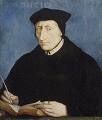
In 1530 Francis I of France founds the College de France in Paris as an alternative to the Sorbonne after being influenced by Parisian #1 scholar Guillaume Bude (Budé) (1467-1540); it gives free public lectures but doesn't grant degrees; the motto is "Docet Omnia" (Teaches Everything); "Not acquired truths, but the idea of free research" by Maurice Merleau-Ponty is inscribed in golden letters above the main hall - I'm one well-rounded Frog?

On July 14, 1531 the U. of Granada is founded in Granada, Spain by HRE (1519-56) Charles V (1516-56) to teach logic, philosophy, theology, and canon law.
In 1535 the study of canon law is forbidden in Cambridge U., which goes on to concentrate on math and science, while Oxford U. sticks to traditional classical studies - the origin of the Two Cultures of C.P. Snow?
On Jan. 6, 1536 New Spain viceroy Antonio Hurtado de Mendoza founds the Colegio de Santa Cruz in Tlatelolco, Mexico, allowing the sons of Aztec nobles to study Latin, rhetoric, philosophy and music, becoming the first univ. in the Americas - no more of that bouncing heads down the pyramid stuff?
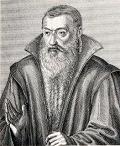
In 1538 John Calvin is expelled from Geneva and settles in Strasbourg, Germany; meanwhile the Lutheran U. of Strasbourg in Alsace, France is founded by Johannes (Jean) Sturm (1507-89) as the first humanistic Protestant Gymnasium, becoming a univ. in 1621 and a royal univ. in 1631, becoming the 2nd largest univ. in France in modern times after Aix-Marseille U.; students incl. Angelus Silesius and Johann Wolfgang von Goethe.
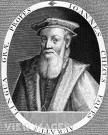

In 1540 Sir John Cheke (1514-57) becomes the first regius prof. of Greek at Oxford, and Roger Ascham (1515-68) at Cambridge.
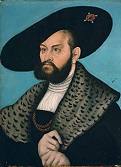
On Aug. 17, 1544 the U. of Konigsberg (Königsberg) is founded in Konigsberg, E Prussia by Duke (since Apr. 10, 1525) Albrecht I Hohenzollern of Brandenburg (1490-1568) becoming the 2nd Protestant U. after the U. of Marburg.
In 1546 Cardinal College at Oxford U. (founded 1525) is refounded as Christ Church, becoming one of the two most aristocratic colleges in Oxbridge along with Trinity College, Cambridge U.; its college chapel is Christ Church Cathedral; it goes on to produce a record 13 British PMs.
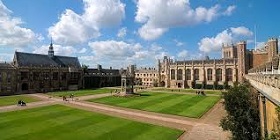
In 1546 Henry VIII founds Trinity College at Cambridge U., which goes onto become the largest Oxbridge college; grads later incl. Isaac Newton, Thomas Babington Macaulay, Adam Sedgwick, Lord Byron, Alfred Lord Tennyson, Bertand Russell, James Clerk Maxwell, Ernest Rutherford, Niels Bohr, and Ludwig Wittgenstein; in 1599-1608 a fountain is built in the Great Court.
In 1548 the U. of Messina is founded in Messina, Italy by St. Ignatius of Loyola, becoming the first Jesuit college.
In 1548 the U. of Jena is founded in Jena, Thuringia, Germany as an academy by the three sons of Elector John Frederick of Saxony, gaining a charter from HRE Ferdinand I on Feb. 2, 1558.
In 1548 rich merchant Thomas Gresham founds seven professorships in London; the U. of London is not founded until 1828.
On Feb. 23, 1551 Society of Jesus (Jesuits) founder St. Ignatius of Loyola founds the Collegio Romano in Rome as a papal univ., moving it in 1582-4 to Rome's Pigna district under patronage by Pope Gregory XIII; in 1584 it is renamed Gregorian U.
On May 2, 1551 the U. of Lima (Nat. U. of San Marcos) in Lima, Peru is chartered by HRE Charles V, becoming the oldest univ. in the Americas to survive to modern times.
On Sept. 22, 1551 the Royal and Pontifical U. of Mexico, founded by Luis de Velasco to train young men for the Church (modeled after the U. of Salamanca) is chartered by crown prince Philip on behalf of HRE Charles V; in 1865 anti-clerical Maximilian I of Mexico closes it.
On June 17, 1552 King Edward VI College in Stourbridge, Worcestershire, England is founded by King Edward VI; in Sept. 1976 it becomes a selective six form college for students age 16-19 with enrollment of 1.6K.
On Aug. 31, 1552 the Collegium Germanicum et Hungaricum seminary for German-speaking priests is established in Rome by Pope Julius III via the bull Dum solicita; the official Jesuit doctrine is laid down as follows: "To search out the hidden venom of heretical doctrine and to refute it, and then to replant the uprooted trunk of the tree of faith" - hand me some holy fire and axes?
In 1555 Trinity College at Oxford U. is founded on land previously occupied by defunct Benedictine Durham College by Sir Thomas Pope (1507-59); Trinity gets is name from Durham College's dedication to the Virgin Mary, St. Cuthbert, and the Trinity.
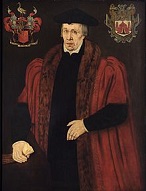
In 1555 St. John's College at Oxford U. is founded by cloth merchant Sir Thomas White (1492-1567) (lord mayor of London in 1553) for Roman Catholic clerics to support the Counter-Reformation, becoming Oxford's wealthiest college - after all, it's the last chance (the 1555 before the big 1666 in St. John's Revelation)?
On Feb. 2, 1558 the U. of Jena in Thuringia is chartered by HRE Ferdinand I after deceased Saxon elector John Frederick I the Magnanimous (who originally wanted to put it in Wittenberg) planned it out during his imprisonment and his three sons carry out his will; it goes on to produce German brain men Gottlieb Fichte, Georg Wilhelm Friedrich Hegel, Friedrich Schelling, and Friedrich Schiller; it is renamed for Schiller in 1934.
In 1559 Philip II of Spain establishes the Roman Catholic U. of Douai (Douay) in Douai, N France; lectures begin in 1562; it goes on to become the 2nd largest univ. in France in the late 17th and 18th cents., becoming a main center of neo-Latin lit. along with math and physics esp. ballistics; it is closed in 1795-1808; in 1887 it is transferred 27 km. away, becoming the U. of Lille.

On May 12, 1562 the U. of Innsbruck in Tyrol, Austria is founded as a grammar school by Dutch Jesuit priest (St.) Peter Canisius (1521-97), opening for classes on June 24 under the direction of the Jesuits at the request of HRE Ferdinand I; in 1677 HRE Leopold I and Pope Innocent XI charter it as a univ. with four faculties; on Sept. 14, 1782 HRE Joseph reduces it to a lyceum, with Jesuit doctrines suppressed incl. "The Imitation of Christ" suppressed in 1773-1822, then reestablished in 1826 by Emperor Francis I under the name Leopold-Franzens-Universitat Innsbruck.
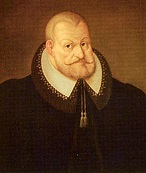
On June 11, 1568 Welf prince (since 1514) Henry V the Younger (b. 1489) dies, and his youngest son Julius, Duke of Brunswick-Luneburg (Brunswick-Lüneburg) (1528-89) becomes prince of Brunswick-Wolfenbuttel (until May 3, 1589), going on to embrace the Protestant Reformation, reform the court system, reform the tax system in favor of farmers, and found a citizen militia. On Oct. 15, 1576 he inaugurates the U. of Helmstedt (Academia Julia) in Brunswick-Wolfenbuttel, Germany, becoming the first Protestant univ. of the N Holy Roman Empire, training Lutheran preachers along with law, medicine, and liberal arts.
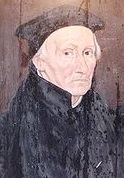
On June 27, 1571 after lobbying by Welsh lawyer-clergyman Hugh Price (1495-1574), Elizabeth I founds Jesus College at Oxford U. for the education of Protestant clergymen.
In 1573 Palacky U. in Olomouc, Moravia is founded by the Jesuits, becoming the 2nd oldest univ. in Czech.; alumni incl. Albrecht von Wallenstein; in the 1770s king HRE Joseph II turns it into a public univ.

On Feb. 8, 1575 Leiden U. in Leiden, South Holland is founded by Prince (1544-84) William I the Silent of Orange (1533-84) as a reward for their heroic defense against the Spanish the year before, becoming the oldest univ. in the Netherlands in modern times; they were offered the choice of a univ. or a tax cut; the city becomes known for as a center for science, gaining the nickname "City of Discoveries", with alumni and faculty incl. Jacobus van't Hoff, Johannes Diderik van der Waals, and Kamerlingh Onnes.
On Oct. 15, 1576 the U. of Helmstedt (Academia Julia) in Brunswick-Wolfenbuttel, Germany is founded, named after Duke Julius of Brunswick-Wolfenbuttel, becoming the first Protestant univ. of the N HRE, training Lutheran preachers along with law, medicine, and liberal arts.

In 1579 the U. of Vilnius (Vilnyus) (origially the Jesuit College of Vilnius) is founded by Stephen Bathory (Báthory) (1533-86), grand duke of Lithuania and king of Poland (since May 1, 1576), becoming the first in the Baltic States, the 3rd in the Polish-Lithuanian Commonwealth (after Cracow U. and Konigsberg U.); in 1831-1919 it is closed down.
In 1580 St. Peter Canisius leaves Germany and founds the Jesuit Seminary of St. Michel in Fribourg, Switzerland, which evolves into the U. of Fribourg.
In 1582 the U. of Edinburgh in Scotland is founded, becoming the 6th oldest univ. in the English-speaking world.
In 1592 Trinity College (College of the Holy and Undivided Trinity) in Dublin, Ireland is founded by Elizabeth I for Anglicans only, with the intention of building a univ. around it, which never happens, causing it to also e known as the U. of Dublin; in 1793 Roman Catholics and Dissenters are admitted, but under restrictions that aren't lifted until 1873; in 1871-1970 the Roman Catholic Church prohibits members from attending without permission; women are admitted in Jan. 1904.
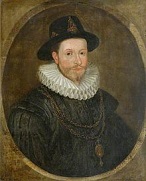
In 1593 Protestant layman George Keith, 5th Earl Marischal (1553-1623) founds Marischal College in Aberdeen, Scotland; in 1860 it is merged with the U. of Aberdeen, who leases it to the Aberdeen City Council.
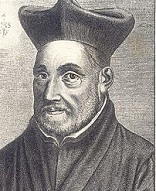
In 1593 the College of St. Omer is founded by Jesuit Father Robert Persons (Parsons) (1546-1610) in Artois, Spanish Netherlands (France); it is forced to relocate to Bruges in 1762 and Liege in 1773, settling in 1794 in Stonyhurst, England, becoming Stonyhurst College.

In 1596 Sidney Sussex College is founded at Cambridge U. by a bequest from the will of Elizabeth's lady of the bedchamber Frances Radclyffe (nee Sidney), Countess of Sussex (1531-89) on the site of Grey Friars' House, which had been suppressed in 1538, and it becomes the first college at Cambridge to admit Scottish and Irish students, becoming known for its E-shaped bldgs.; its mascot is the blue and gold porcupine, taken from her family coat of arms; Oliver Cromwell is one of the first students, although he never graduates, and later his decapitated head is buried beneath the college chapel.
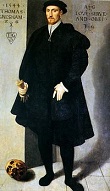
In 1597 Gresham College is founded in Bishopsgate, London by a bequest from the will of wealthy merchant Sir Thomas Gresham (1519-79), founder of the Royal Exchange, establishing seven professorships (astronomy, divinity, geometry, law, music, physic, rhetoric), each who receive Ł50 a year to give six public lectures; early professors incl. Christopher Wren (astronomy) and Robert Hooke (geometry); in 1663-1710 it houses the Royal Society; in 1842 it moves to Gresham St., followed in 1991 to Barnard's Inn Hall in Holborn; in 1985 a professorship is added in commerce, followed in 2014 by environment, and in 2015 in info. technology.
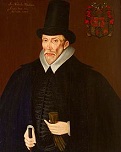
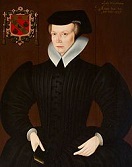
In 1610 Wadham College at Oxford U. is founded by Nicholas Wadham (1532-1609) and his widow Dorothy Wadham (nee Petre) (1535-1618) of Somerset; she becomes the first female non-royal non-aristocrat to found a college at Oxbridge; the college bldg., designed by William Arnold becomes the last English public bldg. built according to the medieval tradition of the master mason; alumni incl. Sir Christopher Wren.
On Apr. 28, 1611 Spanish Dominicans found the U. of Santo Tomas in the Philippines, becoming the oldest univ. in Asia to survive to modern times.
In 1614 the U. of Groningen in Groningen, Holland is founded.
In 1620 The Uppsala U. Library is founded by Gustavus Adolphus (Gustav II Adolf), becoming the largest univ. library in Sweden.
In 1621 the U. of Strasbourg in Alsace, France is founded from a Lutheran humanist gymnasium founded in 1538 by Johannes Sturm, becoming a royal univ. in 1631, going on to become France's largest univ.; alumni incl. Johann Wolfgang von Goethe; in 1872 it is refounded as the German Kaiser Wilhelm Universitat.
In 1621 English historian William Camden (1551-1623) endows the Camden Chair of Ancient History at Oxford U. (first chair of history in the world) before being struck with paralysis and dying on Nov. 9, 1623 in his home at Chiselehurst, Kent (SE London); in 1877 the chair is attached to Brasenose College; in 1910 it is limited to Roman history.
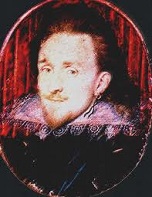
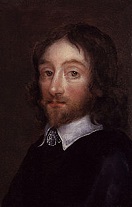
In 1624 Pembroke College at Oxford U. is founded by James I, named after William Herbert, 3rd Earl of Pembroke (1580-1630), rumored patron of William Shakespeare; alumni incl. polymath physician Sir Thomas Browne (1605-82).
On Mar. 26, 1636 Utrecht U. in the Netherlands is founded; the motto is "Sol lustitiae Illustra Nos" (Sun of Justice, shine upon us) (Malachi 4:2).
On Oct. 28, 1636 Cambridge (later Harvard) College is established by vote of the Great and General Court of the Mass. Bay Colony on the banks of the Charles River, with Nathaniel Eaton as pres. #1, becoming the first Protestant (Christian) higher ed. institution in the U.S.; a tall stockade keeps out wolves and Indians; motto "Christo et Ecclesiae" (For Christ and Church), later changed to "Veritas" (Truth).
In 1636 Archbishop William Laud prepares the Laudian Code of Statutes for Oxford U., which are adopted until 1854.

On Sept. 14, 1638 clergyman John Harvard (b. 1607) of Charlestown, Mass. dies, leaving his 400-book library to the new local college at Cambridge, which is later renamed in his honor; the college burns to the ground in 1674, along with all but one of his books; in 1884 a Statue of John Harvard, 1636 Founder of Harvard College is cast by Daniel Chester French, later becoming known as the "Statue of the Three Lies" because it uses a 19th cent. model, JH didn't actually found Harvard, and it was founded in 1636 not 1638; students rub the statue's left toe for luck.
On Sept. 25, 1639 the first printing press in North Am. is established in Cambridge, Mass. in connection with Harvard College, producing mainly religious tracts and sermons; meanwhile Mass. becomes the first state to require marriage licenses.
In 1640 Abo U. (Academy of Abo) in Finland is founded by Queen Christina of Sweden at the suggestion of Swedish gov.-gen. of Finland (since 1637) Count Per Brahe (1602-80), becoming the 3rd univ. in the Swedish realm after Uppsala U. and U. of Tartu.
In 1643 Ann Radcliff donates money for the first scholarships at Harvard College.
On Sept. 23, 1669 Zagreb U. is founded by decree of HRE Leopold I as the Jesuit Academy of the Royal Free City of Zagreb until the Jesuits are dissolved by Pope Clement XIV in 1773, after which in 1776 Empress Maria Theresa founds the Royal Academy of Science, and Austrian emperor Franz Joseph establishes the U. of Zagreb in 1869, becoming the largest Croatian univ. and oldest continuously operating univ. in C Europe S of Vienna and all of SE Europe.
On Feb. 8, 1693 the College of William and Mary in Williamsburg, Va., founded by Va. gov. Sir Edmund Andros and lt. gov. (1690-2) Francis Nicholson is granted a charter by William III and Mary II, becoming the 2nd oldest univ. in the U.S. after Harvard U.; it starts out as a grammar school with an English school for Indian boys, and doesn't establish a collegiate program until 1726, setting records incl. first U.S. college with a full faculty consisting of a pres., six profs., usher, and writing master (1729), first to offer gold medals (1771), first with an intercollegiate fraternity, Phi Beta Kappa (1776), first with an elective system of study (1779), first with an honor system (1779), first to become a university (1779), first with a school of modern languages (1779), first with a school of municipal and constitutional law (1779), first to teach political economy (1784), and first with a school of modern history (1803).
In 1693 French sack Heidelberg for the 2nd time (first 1688); Heidelberg U. Library is destroyed by fire, and has to start over again, reaching 4.2K titles by 1710, 12K titles by 1786 (its 400th anniv.), and 20K by 1800.


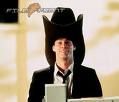
On Oct. 9, 1701 Yale College (the Collegiate School of Connecticut) is chartered in Saybrook, Conn. by a group of 10 Congregational ministers, nine of them Harvard grads, who met the previous year in Killingworth (Clinton); in 1716 Yale Collegiate School moves to New Haven, Conn., teaching only theology and sacred languages; in 1861 it awards the first Ph.D. in the U.S., becoming a univ. in 1887. Yale College is named after prominent Anglican Conn. diamond merchant and slave trader (in Madras, India) Elihu Yale (1649-1721) after Calvinist minister Cotton Mather convinces him to give it an endowment of nine bales (Ł562 worth) of goods along with 417 books and a portrait of George I to counter the liberal and irreligious trends at Harvard "to serve the great interests of education and so of religion"; Yale's money to fund the college was stolen from the East India Trading Co., when he was pres. of Madras until being removed in 1692 after charges of corruption?; actually, Jeremiah Dummer Jr. (1681-1739) (first colonial-born Am. to earn a Euro Ph.D.) is the real founder, soliciting donations from Yale, as well as Isaac Newton and Richard Steele, but nobody wants to go to Dumb and Dummer College, so they stage a coverup?
In 1709 Trinity School in New York City at Broadway and Wall St. is founded by the Trinity Church, becoming the #1 college prep school in the U.S. in 2010.
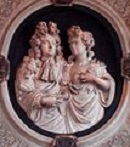
In 1714 Worcester College at Oxford U., named after benefactor Sir Thomas Cookes, 2nd Baronet (1648-1701) of Worcestershire is founded by refurbishing Gloucester Hall (founded in 1283 for Benedictine monks, and dissolved in 1539), becoming known for its quaint medieval cottages.
In 1734 the U. of Gottingen (Göttingen) AKA Georgia Augusta in Gottingen, Lower Saxony, Germany ("the city of science") is founded by Elector Georg August of Hanover (later English King George II); it opens in 1737.


In 1740 the U. of Penn. in Philly is founded as a preaching hall for evangelist George Whitefield; in fall 1749 America's #1 brain man Benjamin Franklin (1706-90) pub. the pamphlet Proposals Relating to the Education of Youth in Pensilvania, calling for a "Public Academy of Philadelphia" that concentrates on secular liberal education incl. classics, commerce, and public service; too bad, the trustees stick with the traditional clergy-oriented curriculum; on Aug. 13, 1751 the Academy and College of Philadelphia for undergrads opens, making the U. of Penn. the first U.S. univ. with undergraduate and graduate studies; it is chartered on July 13, 1753; in 1881 Wharton School of Business is founded at the U. of Pa. by liberal Hicksite Quaker industrialist by Joseph Wharton (1826-1909) (co-founder of the Bethlehem Steel Co. and Swarthmore College), becoming the first higher ed. for accountants in the U.S. and the first collegiate business school; in 1896 Houston Hall opens, modeled after student unions at Cambridge U. and Oxford U., becoming the first student union bldg.
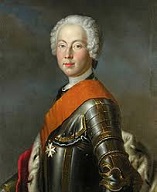
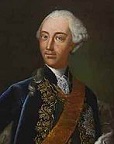
In 1742 arts-and-sciences-loving margrave (1735-63) Frederick the Beloved of Brandenburg-Bayreuth (1711-63) founds a univ. in his capital of Bayreuth, but after the students grow rebellious he transfers it on Nov. 4, 1743 to Erlangen, becoming Friedrich-Alexander U. of Erlangen-Nuremberg, named for him and its benefactor margrave (1757-91) Christian Frederick Charles Alexander "the Wild Margrave" of Brandenburg-Ansbach (1736-1806); famous students incl. Johann Ludwig Tieck, Wilhelm Heinrich Wackenroder, and Emmy Noether.
In 1743 Newark Academy in Newark, Del. is chartered by William Penn's sons Thomas and Richard, changing its name to New Ark College in 1833, Delaware College in 1870, and Delaware U. in 1921.
On Oct. 22, 1746 the Presbyterian College of New Jersey (Princeton U. in 1896) in Elizabeth, N.J., founded by the New Light Presbyterians receives its charter as the successor to William Tennent's Log Cabin for the training of ministers, moving next year to Newark, N.J., and in 1756 to Princeton, N.J.; James Madison and Aaron Burr later attend, and are in the debating club (America's oldest) together.

In 1754 the Anglican King's College (renamed Columbia U. in 1784) is founded in New York City in Morningside Heights with a charter granted by George II; pres. #1 is Stratford, Conn. Episcopal Church rector (since 1723) Dr. Samuel Johnson (1696-1772) (until 1763); not to be confused with English biographer Dr. Samuel Johnson (1709-84).


In 1755 the first law instruction in the U.S. begins at King's College in New York City. Mikhail Lomonosov (1711-65) and Ivan Shuvalov (1727-97) ("the Maecenas of the Russian Enlightenment") get Empress Elizabeth I to decree the establishment of Moscow State U., Russia's first univ.; it is renamed after Lomonosov in 1940.
In 1762 the College in the English Colony of Rhode Island and Providence Plantations, later called Brown U. in the Baptist stronghold of Providence is founded at a meeting of the Philadelphia Baptist Assoc. led by Baptist minister Morgan Edwards (1722-95), who becomes the only Baptist preacher on the English side in the Am. Rev. War; in 1764 it is chartered, becoming the first Baptist college in the 13 colonies; founders incl. Isaac Backus, John Brown, Nicholas Brown, Morgan Edwards, William Ellery, Stephen Hopkins, James Manning, Ezra Stiles, and Samuel Stillman; "The first mover [himself] for it in 1762 was laughed at as a projector of a thing impracticable. Nay, many of the Baptists themselves discouraged the design (prophesying evil to the churches in case it should take place) from an unhappy prejudice against learning." "The first mover [himself] for it in 1762 was laughed at as a projector of a thing impracticable. Nay, many of the Baptists themselves discouraged the design (prophesying evil to the churches in case it should take place) from an unhappy prejudice against learning."
In 1762 the Sorbonne Library (Bibliotheque de la Sorbonne) in Paris is founded.
On Dec. 5, 1776 the secret Phi Beta Kappa Society (emblem: gold watch key) is organized at the Old Raleigh Tavern in Williamsburg, Va. by undergrads of the College of William and Mary after administrators sever the college's ties with Britain and they decide to meet to debate "Whether French politics be more injurious than New England rum" and "Had William the Norman a right to invade England"; branches are established at Yale in 1780 and Harvard in 1781, where they debate whether Adam had a navel and women have equal intellectual capacity to men; it goes non-secret in 1831, admits women in 1875, and gives Vassar the first woman's college charter in 1898; meanwhile Kappa Beta Phi is founded as an alternative, with members wearing a fob tied to a red ribbon around their necks; their emblem consists of a beer stein, Champagne glass, a pointing hand, and five stars; their motto: "Dum vivamus edimus et biberimus" (While we live, we eat and drink".)
In 1782 Washington College in Chestertown, Md. is founded, named in honor of George Washington, becoming the first college chartered after U.S. independence, becoming known for celebrating May Day in the nude by the flagpole.
On Sept. 9, 1783 Dickinson College in Carlisle, Penn. becomes the first college chartered in the U.S., founded by DOI signer Benjamin Rush and named in honor of DOI signer-not John Dickinson.
In 1785 Queen Mary U. of London is founded as London Hospital Medical College, renamed after Queen consort Mary of Teck (1867-1953) and admitted to the U. of London in 1915, going on to merge in 1989 with Westfield College, and marge again in 1995 with St. Bartholomew's Hospital Medical College and London Hospital Medical College.
In 1785 seven immigrant loyalist graduates of Harvard and King's College found the U. of New Brunswick in Saint John, New Brunswick, becoming the oldest English-language univ. in Canada.
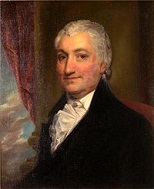
On Feb. 28, 1787 (10 weeks before the Constitutional Convention in Philly opens) the U. of Pittsburgh (originally the Pittsburgh Academy until 1819, then Western U. of Penn. until 1908) in Pittsburgh, Penn. is founded in a log cabin by lawyer Hugh Henry Brackenridge (1748-1816), 1786 founder of the Pittsburgh Gazette, first newspaper W of the Appalachian Mts., becoming the oldest higher ed. inst. in the U.S. W of the Allegheny Mts. to survive to modern times; in 1966 it goes public.
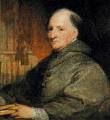
Whether or not you go for the theory that the Illuminati founded the U.S., the Jesuits and Roman Catholics don't take long to move into Washington, D.C. in force? On Jan. 23, 1789 after the Vatican approaches U.S. pres. George Washington about naming a new bishop in the U.S., which Washington consents to, although the distrust of the U.S. govt. is so great that it doesn't establish full diplomatic relations with the Vatican for almost two cents. (1984), Georgetown U. (originally Georgetown College) is founded in the Georgetown neighborhood of modern-day Washington, D.C. by John Carroll (1735-1815), who becomes Roman Catholic bishop of Baltimore, Md. on Nov. 6 (until Dec. 3, 1815), becoming the oldest Roman Catholic and Jesuit-affiliated univ. in the U.S.; after the U.S. Civil War they adopt blue and gray as school colors; by 1920 their athletic teams are nicknamed the Hoyas (Gr. "hoya" = what, such); Carroll, a Jesuit who returned to the U.S. in 1774 after their suppression in Europe, who was appointed in 1784 by Pope Pius VI as prefect apostolic of the U.S. at the recommendation of Benjamin Franklin becomes the first Roman Catholic bishop in the U.S., followed by archbishop in 1808; all the church groups in the U.S. are getting federal fever and seeking to nationalize their orgs. now.?; Georgetown U. incl. U.S. Pres. William Clinton, U.S. Supreme Court Justice Antonin Scalia, CIA dir. George Tenet, King Felipe of Spain, and 1K U.S. Foreign Service diplomats.
In 1789 the U. of N.C. in Chapel Hill is chartered, becoming the first state univ. in the U.S.
In 1789 Penn. State U. is founded from Philadelphia Academy (founded 1749).
In 1791 Benares College is founded in Benares, India, becoming a center of Sanskrit study.
In 1791 the U. of Vt. is founded in Burlington, Vt. by Ira Allen (1751-1814), brother of Ethan Allen and the Marquis de Lafayette, who visits it in 1825, becoming its main claim to fame.
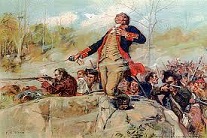
In 1793 Williams College in Williamstown, W. Mass. in the foothills of the Berkshire Mts. at the foot of Mt. Greylock is founded by a bequest by Mass. colonist Ephraim Williams Jr. (1715-55) (who was KIA at the Battle of Lake George and is mentioned in "Yankee Doodle" with the line "Brother Ephraim sold his cow"), becoming the traditional rival of Amherst College (founded 1821) and Wesleyan U. (founded 1831), "the Little Three"; its mascot is a Purple Cow; sports teams are nicknamed the Ephs (rhymes with chiefs).
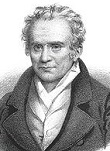
In 1794 the Ecole Normale Superieure is founded by the French Nat. Convention led by Robespierre as the core of the French nat. education system; the Ecole Polytechnique (world's first technical college) is founded in Paris by French mathematician Gaspard Monge (1746-1818), minister of the marine; in the U.S. the term "normal school" arrives in fractured form later.
On Feb. 25, 1795 Union College is founded in Schenectady, N.Y., becoming the first higher ed. institution chartered by the New York Board of Regents, and the 2nd college in N.Y. after Columbia U., going to graduate U.S. pres. Chester A. Arthur and a ton of U.S. govt. bigwigs, and become known as the Mother of Fraternies, spawning the first three Greek letter societies in the U.S., Kappa Alpha (1825), Sigma Phi (1827), and Delta Phi (1827); on Nov. 26, 1825 the social fraternal org. Kappa Alpha is founded there, followed by Sigma Phi (Mar. 4, 1827), and Delta Phi (Nov. 17, 1827), known as the Union Triad, followed by Psi Upsilon (Nov. 24, 1833), Chi Psi (May 20, 1841), and Theta Delta Chi (Oct. 31, 1847).
In 1800 Downing College at Cambridge U. is founded after a long legal battle with the widow of Sir George Downing, 3rd Baronet (1685-1749), becoming the first college added since 1596 (next in 1869); "the oldest of the new colleges and newest of the old"; alumni incl. John Hopkins, John Cleese, and Trevor Nunn.
In 1800 Middlebury College in Vt. is founded; it goes coed in 1883.

On July 25, 1801 U.S. Rep. (Dem.-Repub., Ga.) (1795-1802) John Milledge (1757-1818) founds the city of Athens, Ga. (modern-day pop. 115K/192K) on the Oconee River as a site for the U. of Ga. (incorporated Jan. 27, 1785); on Nov. 4, 1802 he becomes Ga. gov. #26 (until Sept. 23, 1806), founding a land lottery for fair distribution of former Creek lands, reorganizing the state militia, and building a road to Tenn. through Cherokee lands; on June 19, 1806 he becomes U.S. Sen. from Ga., resigning on Nov. 14, 1809.
In 1801 the Royal Military College (RMC) is founded in Great Marlow and High Wycombe, Buckinghamshire, England by British CIC (1795-1809) Prince Frederick, Duke of York, moving in Oct. 1812 to Sandhurst in Berkshire, encouraging prof. merit-based training of future officers; in 1947 it is combined with the Royal Military Academy ("the Shop") in Woolwich (founded 1741) as the Royal Military Academy Sandhurst.
On Mar. 16, 1802 the U.S. Military Academy (USMA) at West Point, N.Y. is authorized by Congress; it officially opens on July 4; later, when they can't find dark material for uniforms they end up using gray, causing the "plebes" (1st-year students) to become known as the Long Gray Line; it originates the tradition of class rings.
On May 1, 1802 Ecole Speciale (École Spéciale) Militaire de Saint-Cyr (ESM) (Special Military School of Saint-Cyr) is founded in Fontainebleu, France by Napoleon in the Maison Royale de Saint-Louis school for impoverished daughters of noblemen (founded in 1685 by Louis XIV); in 1808 they move to Saint-Cyr (W of Paris), becoming the #1 military academy in France, with the motto "Lis s'instruisent pour vaincre" (They study to vanquish).
In 1802 the Philolexian Society, based on a 1770s lit. society founded by Alexander Hamilton is founded at Columbia U. "to improve its members in Oratory, Composition and Forensic Discussion"; motto: Surgam (Lat. "I shall rise"); it later becomes the rival of the Peithologian Society (founded 1806 for freshmen; motto: Vitam Impendere Vero = Lat. "To devote one's life to truth"); the school colors later become Philolexian Blue and Peithologian White.
In 1804 the private Roman Catholic College Stanislas de Paris is founded on Rue Notre-Dame-des-Champs, Montparnasse, going on to become the alma mater of Anatole France, Charles de Gaulle, Edmond Rostand, Christian Dior, and Alfonso XII of Spain.

On Oct. 15, 1811 the U. of Berlin is founded in Berlin, Germany by Prussian educator Friedrich Wilhelm Christian Karl Ferdinand von Humboldt (1767-1835) as "the mother of all modern universities", located in the former palace of prince Henry of Prussia, brother of Frederick II on the Unter den Linden Ave.; in 1828 it becomes Friedrich-Wilhelm U. AKA Universitat unter den Linden; in 1949 it becomes Humboldt U. of Berlin.

In 1811 the U. of Christiania (Royal Frederick U.) in Christiania (modern-day Oslo), Norway is founded by king (1808-39) Frederick VI of Denmark and Norway (1768-1839) as the first univ. in the Danish-Norwegian Union, training high-ranking civil servants; for the first time Norwegian students don't have to attend the U. of Copenhagen; in 1905 the union with Sweden is dissolved; in 1946 it is renamed the U. of Oslo; in 1947-89 the Nobel Peace Prize is awarded yearly in its atrium.
On Nov. 19, 1816 after the Polish partition separates Warsaw from the Cracow, the U. of Warsaw in Poland is founded as a royal univ. by Alexander I, opening in 1818 and growing to the largest univ. in Poland in the 1930s; it is closed during the 1830 November Uprising, reopened in 1857 as the Warsaw Academy of Medicine, closed during the 1869 January Uprising, reopened during WWI, closed during WWII, and reopened in 1945.
In 1816 the U. of Erfurt in Germany (founded 1379) is abolished after political upheavals.
On Aug. 26, 1817 the U. of Mich. is founded in Detroit, Mich., moving in 1837 to Ann Arbor, Mich., named after two women founders named Ann plus the nice trees?; women are admitted in 1870; the sports teams are called the Wolverines (colors maize and blue).

In 1817 the U. of Ghent is founded in Ghent, Belgium by Netherlands king and Luxembourg grand duke (since Mar. 16, 1815) William I (1772-1843), opening on Oct. 9 with 16 profs. and 190 students, teaching humanities, law, medicine, and science, all in Latin; in 1830 after the Belgian Rev. of 1830, the new Belgian govt. becomes its admin., changing its name to State U. of Ghent; in 1930 it becomes the first Dutch-speaking univ. in Belgium; in 1991 it is granted autonomy, changing its name to Ghent U.; meanwhile William I founds the U. of Liege (Ličge) in Liege, Wallonia, Belgium, with French as its official language.
On Oct. 18, 1818 the U. of Bonn (originally the Rhein U.) is founded by Frederick William III as the successor to the Kurkolnische (Kurkölnische) Bonn (founded in 1777); alumni incl. Frederick III, Heinrich Heine, Friedrich Nietzsche, Karl Marx, Konrad Adenauer, Joseph Schumpeter, Prince Albert, and Pope Benedict XVI.
In 1818 Dalhousie U. in Halifax, N.S. Canada is founded by Nova Scotia gov. the 9th earl of Dalhousie using money acquired from duties collected during the occupation of parts of Maine in the War of 1812; it is open to all regardless of class or creed and "founded on the principles of religious tolerance", becoming of the few Canadian univs. founded on secular principles.
In 1818 Saint Louis U. in St. Louis, Mo. is founded by the Jesuits.
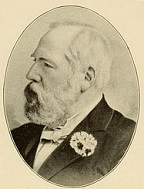
In 1819 Colgate U. (originally Madison U.) in Hamilton, N.Y., founded in 1817 by the Baptist Education Society of N.Y. is chartered; in 1890 it changes its name to Colgate U. after a $1M donation by financier James Boorman Colgate (1818-1904).

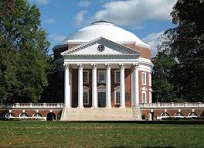
In 1819 the U. of Virginia, "Mr. Jefferson's University" is founded within sight of Monticello by U.S. pres #3 (1801-9) Thomas Jefferson (1743-1826); the rotunda is based on Jefferson's design; he planned it as an "academical village" with a "temple of knowledge" that breaks free from his alma mater the College of William and Mary and its religious straightjacket.
On Dec. 18, 1820 the U. of Ala., "the Capstone" is founded by the Ala. legislature as a seminary; in 1860 it is turned into a military school; on Apr. 4, 1865 Union troops burn the campus down, and it reopens in 1871, with 40K acres of coal land granted to it by Congress in 1880; in 1892 it admits women; the football team (1892) is called the Crimson Tide; it is integrated in 1963.
On Aug. 12, 1821 the U. of Buenos Aires is founded in Buenos Aires, Argentina, becoming the largest educational institution in South Am.
In 1821 Amherst College in Amherst, Mass. is founded, becoming the traditional rival of Williams College (founded 1793), and one of the Little Three (top U.S. liberal arts colleges) along with Wesleyan U. (founded 1831).
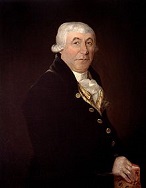
In 1821 McGill U. is founded in Montreal, Lower Canada on Burnside Place at the foot of Mount Royal, chartered by George IV of Britain and named for Sottish-born Montreal merchant James McGill (1744-1813), who left a bequest in his will.

In 1821 after founding a girls' seminary in Waterford, N.Y. in 1819, Emma Hart Willard (1787-1870) founds Troy Female Seminary (later the Emma Willard School) in Troy, N.Y., becoming the first college-level school for women, where the male chauvinists are shocked by the teaching of algebra, trig, science, and even higher math to future barefoot-pregnant wives and mothers - Janet Jackson's "Rhythm Nation 1814" is only 168 years ahead?

In 1823 Middlebury College in Vt. (founded on Nov. 1, 1800) becomes the first U.S. higher education inst. to grant a bachelor's degree to an African-Am., Alexander Lucius Twilight (1795-1857).
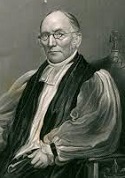
In May 1823 after Conn. disestablishes the Congregational Church in 1818, Trinity College is founded in Hartford, Conn. by Episcopalian bishop (since 1852) Thomas Church Brownell (1779-1865), becoming the 2nd college founded in Conn. after Yale U.

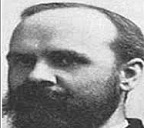
On Apr. 7, 1824 the Mechanics' Inst. is founded in Manchester, England by chemist John Dalton (1766-1844) et al. to provide a scientific education for the working man based on the ideas of Thomas Hodgskin (1787-1869); on Oct. 1, 2004 it is merged into the Victoria U. of Manchester to form the U. of Manchester Inst. of Science and Technology (UMIST).

In 1824 Justus von Liebig (1803-73) of the U. of Erlangen discovers that no univ. in the world has a lab for students, then leaves to found his own at the U. of Giessen in Giessen, Hessen, W Germany (40 mi. NW of Frankfurt) (founded 1607), becoming the first modern teaching laboratory, specializing in organic chemistry - the first lab geeks?
In 1827 the U. of Toronto (originally King's College until 1850) is founded in Toronto, Ont., Canada by royal charter, becoming the first higher ed. institution in Upper Canada; in 1850 it drops Church of England control; sports teams are called Varsity Blues; it goes on to found the Toronto School of lit. criticism, pioneer insuln and stem cell research, develop the first practical electron microscope, found the computer theory of NP-completeness, identify the first black hole Cygnus X-1, and develop multi-touch technology.
In 1829 Baptist Georgetown College is founded in Georgetown, Ky. by the Ky. Gen. Assembly.
In 1830 the town of Oxford, Miss. is founded, named so as to convince the legislature to make it the home of the U. of Miss. AKA Ole Miss, which it does in 1848; it later becomes William Faulkner's adopted hometown.
On Dec. 13, 1831 Denison U. (originally Granville Lit. and Theological Inst.) in Granville, Ohio is founded by John Pratt, becoming the 2nd Baptist college W of the Allegeny Mts. after Georgetown College (founded 1829), and Ohio's 2nd liberal arts college.

On Dec. 26, 1831 Am. financier-philanthropist Stephen Girard (b. 1750) dies in Philadelphia, Penn., leaving $7.5M fortune, largest in the U.S., the bulk designated for philanthropic purposes, incl. improved police and municipal improvements in Philly, and for the erection of a school for "poor, white, male orphans", with all religious ministers of any sect excluded from entering the premises or working in it, which freaks the heirs, causing them to contest it in court in 1836, going all the way to the U.S. Supreme Court, where Daniel Webster makes a famous Plea for the Christian Religion in 1844 but loses. In 1848 Girard College is founded in Philadelphia, Penn. with $5.26M from the will of Stephen Girard (d. 1831) after a challenge is thrown out by the U.S. Supreme Court; it opens with 100 pupils and 17 instructors, and within a cent. grows to 1.5K students doing primary thru high school level work.

In 1831 New York U. (NYU) in New York City is founded by Swiss-born U.S. Treasury secy. #4 (1801-14) Albert Gallatin (1761-1849); the first 100 students occupy rental quarters until the first bldg. is purchased on Washington Square in 1837.
In 1831 Wesleyan U. is founded in Middletown, Conn. Methodist Episcopal Church, becoming the first U.S. college named after John Wesley, and of the Little Three (top U.S. liberal arts colleges) after Williams College (founded 1793) and Amherst College (founded 1821).
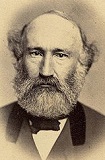
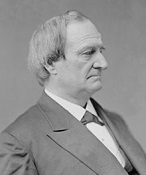
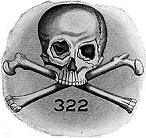
In 1832 after a dispute over Phi Beta Kappa awards, the Order of the Skull & Bones secret society (AKA the Tomb and the Brotherhood of Death) is founded at Yale U. by William Huntington Russell (1809-85) and Alphonso Taft (1810-91), going on to develop a rep for association with the power elite and being associated with the 13 Family Bloodlines of the Illuminati; only 15 white male Yale seniors, are invited each year, and initiates must swear an oath of secrecy in the Skull and Bones Tomb, where meetings are held every Thur. and Sun. evening; Masonic-type initiation rites incl. kissing a skull, which was dug up in WWI by a group of Army volunteers from Yale stationed at Ft. Sill, Okla., who believe it to be the skull of Geronimo, which was was buried there in 1909; it goes coed in 1992; members (Bonesmen) incl. U.S. Pres. William Howard Taft, U.S. Chief Justice Morrison R. Waite, U.S. Pres. George H.W. Bush, U.S. Pres. George W. Bush, CIA founder James Jesus Angleton, Time Life founders Henry Luce and Briton Hadden, U.S. Sen. John Kerry, Morgan Stanley co-founder Harold Stanley, and FedEx founder Frederick W. Smith.
On Apr. 22, 1833 Kalamazoo College in Mich. (original name Mich. and Huron Inst.)) is founded by a group of Baptist ministers; in 1837 it is renamed the Kalamazoo Lit. Inst.; in 1840 it merges with the U. of Mich.; in 1842 James Stone becomes pres. #1 (until 1863), adding a theological seminary and female dept., hosting the intial meeting in his home that founds the Repub. Party.
In 1833 Haverford College in Haverford, Penn. is founded by the Quakers, becoming their first univ. in the U.S.
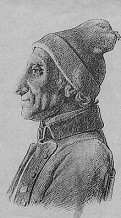
In 1833 Oberlin College (Collegiate Inst.) in Ohio is founded by Presbyterian ministers John Jay Shipherd (1802-44) and Philo Stewart, named after Alsatian minister Jean-Frederic Oberlin (1740-1826); in 1835 abolitionist Asa Mahan (1799-1889) becomes pres. #1, getting the school to open admissions to students of all races in 1837, becoming the first U.S. multiracial college; on Sept. 6, 1837 it becomes the first college in the U.S. to go coed.
On Apr. 22, 1833 Kalamazoo College in Kalamazoo, Mich. (original name Mich. and Huron Inst.)) is founded by a group of Baptist ministers; in 1837 it is renamed the Kalamazoo Lit. Inst.; in 1840 it merges with the U. of Mich.; in 1842 James Stone becomes pres. #1 (until 1863), adding a theological seminary and female dept., hosting the intial meeting in his home that founds the Repub. Party.

On Apr. 29, 1833 the U. of Zurich is founded in Zurich, Switzerland from a merger of Huldrych Zwingli's Carolinum (founded in 1525) with a new faculty of philosophy, becoming the first univ. in Europe founded by a state rather than a monarch or a church; in 1839 German theologian David Friedrich Strauss (1808-74), author of The Life of Jesus, Critically Examined (1833-5), denying his divine nature becomes prof. of theology, causing a firestorm of controversy, causing him to be pensioned before he can conduct classes; in 1847 women are allowed to attend philosophy lectures, and admitted in 1866; in 1901 a veterinary medicine faculty is added (2nd oldest in the world).
In 1834 Prince of Wales College in Charlottetown, Prince Edward Island, Canada is founded.

In 1834 Tulane U. (originally Medical College of La.) is founded; in 1882 N.J.-born New Orleans merchant Paul Tulane (1801-87) donates $1M, its name is changed to guess what, and it absorbs the State U. of La., with tax-exemption granted.
In 1834 Wake Forest U. in Wake Forest, N.C. is founded, eventually moving to Winston-Salem and becoming coed.
In 1834 Delta Upsilon, the first non-secret Greek fraternity in the U.S. is founded at Williams College in Mass.
On Oct. 12, 1836 after William IV charters it to get around the Canadian govt., Victoria U., Toronto is founded in Toronto, Ont., Canada by the Wesleyan Methodist Church.

In 1836 Emory U. (originally Emory College), named after Methodist Episcopal bishop John Emory (1789-1835) is founded in the new town of Oxford, Ga., relocating to Atlanta, Ga. in 1915 after a land grant by Coca-Cola Co. founder Asa Griggs Candler, causing it to become known as the Coca-Cola U.
On May 3, 1837 the Nat. and Capodistrian U. of Athens (originally the Othonian U. until 1862, then the separate Nat. U. and Kapodristian U. until 1932) is founded in Zofrafou, Attica, Greece on May 3 by King Otto, becoming the first univ. in modern Greece, going on to become the 2nd biggest after the Aristotle U. of Thessaliniki.
In 1837 Davidson College is founded in Davidson, N.C. by the Concord Presbytery on 469 acres of land purchased by Am. Rev. War Brig. Gen. William Lee Davidson; on May 5, 1972 women are allowed to enroll; in 2005 the board of trustees votes 31-5 to allow 20% of the board to be non-Christian; in 2007 the need for student loans is eliminated.

In 1837 DePauw U. (originally Indian Asbury U.) is founded in Greencastle, Ind. by the Methodist Episcopal Church, and named after their first Am. bishop Francis Asbury (1745-1816).
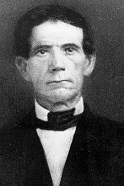
In 1837 Marshall U. is founded in Huntington, Va. (modern-day W Va.) by atty. John Laidley (1791-1863) et al., and named after his friend chief justice John Marshall.

In 1837 Mount Holyoke College (originally Mount Holyoke Female Seminary until 1893) (first member of the Seven Sisters) is founded in South Hadley, Mass. by Mary Mason Lyon (1797-1849) for "adult female youth in the common walks of life", giving the daughters of farmers and artisans a high quality low cost ed., and supplying the U.S. with a steady stream of female teachers, which feminizes the profession, and creates the tantalizing phenomenon of unmarried professional women enjoying autonomy before, ahem, marriage - plus a little lezzie experimentation in the semen-nary?
In 1837 Muskingum U. (originally Muskingum College until June 2009) is founded in New Concord (60 mi. E of Columbus), Ohio by the Presbyterian Church USA, becoming the alma mater of astronaut John Glenn; the alumni are called the Long Magenta Line; sports teams are known as the Fighting Muskies.
In 1838 Acadia U. (Queen's College until 1841, then Acadia College until 1891) is founded in Wolfville, Nova Scotia, Canada.

In 1838 Duke U. is founded in Brown's Schoolhouse in Trinity, N.C. by the Union Inst. Society of Methodists and Quakers, becoming the Union Inst. Academy in 1841, Normal College in 1851, and Trinity College in 1859; in 1892 it moves to Durham, N.C. after donations by rich Methodist tobacco magnate George Washington Duke (1820-1905).
On Mar. 5, 1839 Longwood U. in Farmville, Va. (2 mi. from the Israel Hill community of free black people formed about 1800) is founded by Methodist minister Solomon Lea as the Farmville Female Seminary Assoc. (until June 5, 1875); in early Apr. the Union and Confed. armies march past the N end of the campus before the Apr. 9, 1865 Battle of Appomattox Court House; in 1951 a student strike at Robert Russa Moton H.S. at the S end of the campus helps lead to the U.S. Supreme Court case Brown v. Board of Education; it goes coed in June 1976.
In 1839 state-supported Virginia Military Inst. (VMI) is founded at the state arsenal in Lexington, Va., becoming known as "the West Point of the South".
By 1840 there are 78 colleges and universities in the U.S., 35 of them founded after 1830, mostly by churches.
On June 21, 1841 Fordham U. (originally St. John's College until 1907) is founded in Tarrytown, N.Y. is founded by the Catholic Diocese of New York under the care of the Jesuits, becoming the first Roman Catholic higher ed. inst. in the NE U.S., receiving a charter from the New York legislature in 1846, and opening a chapter in Manhattan, N.Y., which becomes the independent College of St. Francis Xavier in 1861; in 1847 poet Edgar Allan Poe arrives in Fordham, N.Y., becoming lifelong friends with the college Jesuits, pub. "The Bells" in 1849; sports teams are called the Rams; alumni incl. Vince Lombardi, Pres. Donald Trump, Geraldine Ferraro, Andrew Cuomo, William J. Casey, John N. Mitchell, John O. Brennan, Cardinal Francis Spellman, Wellington Mara, Charles Osgood, G. Gordon Liddy, Denzel Washington, Alan Alda, Dylan McDermott, Mary Higgins Clark, Don DeLillo, Bob Keeshan, John LaFarge, and historian John Gilmary Shea.

On Nov. 19, 1842 the U. of Chile in Santiago is founded, with Caracas-born brain man Andres Bello (1781-1865) as first rector (until 1865).
In 1842 Bethany College in Bethany, Va. (later W. Va.) is founded by Disciples of Christ founder Alexander Campbell.
In 1842 The Citadel military school is founded in Charleston, S.C. - time to garrison against Garrison?
In 1842 Roanoke College in Augusta County, Va. (later Salem, Va.) is founded by the Lutherans.
In 1842 Roman Catholic Villanova U. (originally Augustinian College of Villanova) is founded in Radnor Township NW of Philadelphia, Penn. by the Order of St. Augustine; in 1918 it admits nuns to evening parochial school education classes; in 1958 it admits women to its college of engineering; in 1968 it goes fully coed; sports teams are called the Wildcats.
In 1843 the Jesuit College of the Holy Cross is founded in Worcester, Mass., becoming the oldest Roman Catholic college in New England.

On Jan. 15, 1844 the U. of Notre Dame (Notre Dame du Lac) in South Bend, N Ind. (near the border with Mich. and Ill.), founded on Nov. 26, 1842 by Father Edward Frederick Sorin (1814-93) of the French religious order Congregation of Holy Cross receives its charter from the state of Indiana; it is turned over to lay control in 1967; sports teams are known as the Fighting Irish.
On Feb. 24, 1844 the U. of Miss. (Ole Miss) in Oxford, Miss. is founded by the Miss. legislature, opening its doors to its first class of 80 students in 1848; in 1861 135 of 139 students enlist in the Confed. Army; it goes coed in 1882, hiring the first higher ed. female faculty member in the Am. Southeast in 1885; in 1897 student Elma Meek suggests the name Old Miss; on Sept. 30, 1962 after being denied entry on Sept. 20-26, USAF vet James Howard Meredith (1933-) enrolls while escorted by U.S. marshals, integrating the univ.; the sports teams are called the Rebels.

In 1845 Baylor U. in Waco, Tex. on the banks of the Brazos River is founded by the Union Baptist Assoc. after a suggestion by Ky.-born Judge Robert Emmett Bledsoe Baylor (1793-1874), becoming the first univ. in Tex.
In 1845 Magee College in Londonderry, Ireland is founded.
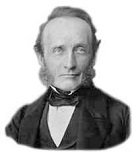
In 1845 the Royal College of Chemisty is founded in London, England by chemist Robert Warington (1807-67) et al., merging with the Royal School of Mines in 1852 and becoming the first constituent college of Imperial College London before closing in 1872.
In 1845 Alpha Sigma Phi Fraternity is founded at Yale U. by Louis Manigault (son of Charles I), Stephen Ormsby Rhea, and Horace Spangler Weiser, becoming the 10th oldest fraternity in the U.S.; members are rewarded with membership in Skull & Bones and Scroll & Key.
On Feb. 5, 1846 Bucknell U. (originally the U. at Lewisburg) is founded in Lewisburg, Penn. by a group of Baptists, and chartered by the Penn. Gen. Assembly.

On May 11, 1846 the U. of Buffalo (later the State U. of New York at Buffalo) is founded by Millard Fillmore (1800-74) et al.
On June 1, 1847 the Zeta Psi (Zetes) men's fraternity is founded at NYU by John Bradt Yates Sommers, William Henry Dayton, and John Moon Skillman, growing to 50K brothers in 53 active and 34 inactive chapters; on May 3, 2008 it charters Iota Omicron at Oxford U., followed on May 5, 2016 by Gamma Psi at the U. of Guelph.
In 1847 City U. of New York (CUNY) is founded in New York City as the Free Academy, becoming the first inst. of free public higher ed. in the U.S., becoming the 3rd largest univ. in the U.S. after SUNY and Calif. State U.; on Dec. 15, 1928 the cornerstone for Baruch College (originally City College School of Business and Civic Admin.) is laid, becoming the biggest business school in the U.S., renamed in 1953 to Baruch School of Business; in 1930 it begins admitting women; by 1935 enrollment reaches 40K; in 1961 the City U. of New York system is established, and in 1968 the Baruch School of Business is spun off as an independent college in the system; in 1970 it adopts an open admissions policy to accommodate minorities, and by 2016 the student body comes from 200+ countries, with white, black, and Hispanic pops. each comprising 25%+, and Asians 18%; in 1976 after enrollment swells from 174K to 268K it begins charging tuition.
In 1847 Earlham College in Richmond, Ind. is founded by the Quakers.
In 1847 Lawrence U. in Appleton, Wisc., becoming the 2nd U.S. college to be founded as a coeducational inst.
In 1848 Roman Catholic Ottawa (Bytown) College is founded in Canada, becoming a univ. in 1866, and one of four North Am. pontifical univs. in 1899.

In 1848 Queen's College for women on Harley St. in London is founded by Christian Socialist theologian Frederick Denison Maurice (1805-72), prof. at King's College in London (1840-53); its mission is to educate governesses.
On Feb. 28, 1850 the U. of Utah (originally the U. of Deseret until 1892) is founded in in Salt Lake City, Utah by the Deseret gen. assembly, becoming Utah's flagship univ.
On Oct. 1, 1850 the U. of Sydney in Sydney, Australia is founded by the govt. of New South Wales, becoming Australia's first univ.; on Feb. 27, 1858 it receives a royal charter from Queen Victoria; motto: "Sidere mens eadem mutato" (Though the constellations are changed, the mind remains the same).
In 1850 Ill. Wesleyan U. is founded in Bloomington, Ill.; John Wesley Powell joins the faculty in 1865, taking his students to visit the Rocky Mts. in 1867, becoming a first for Am. higher ed.

On Jan. 28, 1851 Northwestern U. in Evanston (near Chicago), Ill. on the shore of Lake Michigan, founded on May 3, 1850 by nine businessmen led by future Colo. Territory gov. (1862-5) John Evans (1814-97) is chartered by the state of Ill., affiliated with the Methodist Episcopal Church but opening enrollment to all faiths; classes open in 1855; women are admitted in 1869; alumni incl. actors Ann-Margret, Warren Beatty, Stephen Colbert, Zooey Deschanel, Julia Louis-Dreyfus, Marg Helgenberger, Charlton Heston, Jennifer Jones, Cloris Leachman, Shelley Long, Paul Lynde, Meghan Markle, Megan Mulally, Seth Myers, Jerry Orbach, Paula Prentiss, Tony Randall, David Schwimmer, McLean Stevenson, and U.S. Supreme Court justice John Paul Stevens.
In 1851 Victoria U. of Manchester (originally Owens College) is founded in liberal-minded Manchester, England by texile merchant John Owens (1790-1846).

In 1852 nonsectarian coed Antioch College is founded in Yellow Springs, Ohio, with Franklin, Mass.-born Horace Mann (1796-1859) (father of the Common School Movement) as pres. #1.
In 1852 Laval U. for Roman Catholic men in Quebec, Canada is founded, named after Francois Xavier de Laval-Montmorency (1623-1708), first bishop of Quebec.
In 1852 Mills College (originally the Young Ladies' Seminary) is founded in Benicia, Calif., becoming the first women's college W of the Rocky Mts., moving to Oakland, Calif. in 1871.

In 1852 Tufts U. in Medford/Somerville (near Boston), Mass. is founded by Universalist Charles Tufts (1781-1876) as a non-sectarian univ.; it later becomes home to the Fletcher School of Law and Diplomacy, the oldest grad school of internat. relations in the U.S.
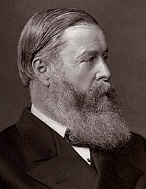
On Jan. 22, 1853 the U. of Melbourne in Australia is founded by Australian Liberal statesman Hugh Culling Eardley Childers (1827-96), with the Victoria Gold Rush providing the funding; in 1881 it admits women.


On Feb. 22, 1853 Washington U. in St. Louis (WUSTL) (WashU) in St. Louis, Mo., named after U.S. pres. #1 (1789-97) George Washington is founded by Unitarian minister William Greenleaf Eliot (1811-87) (grandfather of T.S. Eliot) and dry goods owner Wayman Crow (1808-85) as a seminary, growing to 7K undergraduate and 7K postgrad students by modern times.

On May 18, 1854 Univ. College Dublin (UCD) (originally the Catholic U. of Ireland) in Dublin, Ireland is founded with Anglican-to-Roman Catholic convert John Henry Newman (1801-90) as rector #1 (until 1860); it is reformed in 1880, and chartered in 1908.

In 1854 the Working Men's College is founded in London by Christian Socialism founder John Frederick Denison Maurice (1805-72).
In 1854 Hamline U. is founded in St. Paul, Minn., named after United Methodist bishop Leonidas Lent Hamline, becoming the oldest higher learning inst. in Minn.
In 1854 Lincoln U. in Chester County, Penn. is founded, becoming the first higher ed. institution for youth of African descent, graduating leaders for the new nation of Liberia, then going on to graduate Thurgood Marshall, Langston Hughes, Roscoe Lee Browne, Nnamdi Azikiwe, Kwame Nkrumah, and Melvin B. Tolson.; called Ashmun Inst. until 1866.
In 1855 Mich. and Penn. establish land-grant agricultural and mechanical colleges, which later become Michigan State U. in East Lansing, Mich., home of the Spartans, and Penn. State U. in University Park, Penn., home of the Nittany ("single mountain") Lions; on Aug. 29, 1896 the town of State College, Penn. (modern-day pop. 42K) is incorporated.
On Feb. 12, 1855 Mich. State U. (originally the Agricultural College of the State of Mich. until 1861, then State Agricultural College until 1909, then Mich. Agricultural College until 1925, then Mich. State College of Agriculture and Applied Science until 1955, then Mich. State U. of Agriculture and Applied Science until 1964) is founded in East Lansing, Mich., opening for classes on May 13, 1857 with five faculty and 63 students, becoming the first U.S. land grant univ. under the 1862 U.S. Morrill Act, and one of the first to teach scientific agriculture; in 1870 it goes coed; in 1899 it admits its first black student, William O. Thompson, followed in 1903 by the first female black student, Myrtle Craig; sports teams are called the Spartans.
On Feb. 22, 1855 Penn. State U. (originally Farmers' H.S. of Penn. until 1862, then Agricultural College of Penn., and Penn. State College in 1874-1953) is founded in State College, Penn. by the Mass. legislature; the football team is called the Nittany ("single mountain") Lions.
On Mar. 16, 1855 Bates College in Lewiston, Maine is founded by abolitionists.
In 1855 Butler U. in Indianapolis, Ind. is founded by abolitionist Christian (Disciples of Christ) atty. Ovid Butler (1801-81); in 1924 the dept. of religion splits off.
In 1855 Edinburgh U. creates a professorship of technology - safe for Scotty?
In 1855 the Swiss Federal Inst. of Technology (ETH Zurich) in Zurich, Switzerland opens, doing a balancing act with the different languages and religions to advance industry.
On Feb. 1, 1856 Auburn U. in Auburn, Ala. is founded as the East Ala. Male College, becoming the first Ala. public land grant univ. in 1872, going coed in 1892.

On Sept. 1, 1856 Seton Hall College in Madison, N.J. is founded by Roman Catholic bishop of Newark, N.J. and archbishop #8 of Baltimore, Md. (1872-7) James Roosevelt Bayley (1814-77), named after his aunt Mother (St.) Elizabeth Ann Seton, the first Am.-born Roman Catholic saint; sports teams are called the Pirates.
In 1856 Wilberforce U. in Wilberforce, Ohio is founded by the African Methodist Episcopal Church (AME), becoming the first college owned and operated by African-Ams.; alumni incl. Leontyne Price and Ossian Sweet.
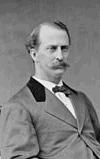
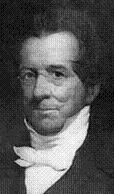
In 1857 Edward Miner Gallaudet (1837-1917) founds the Columbia Institution for the Dead, er, Deaf and Dumb and the Blind in Washington, D.C. on 2 acres of land donated by Amos Kendall, becoming pres. #1 (until 1910); in 1864 Pres. Lincoln signs a bill authorizing it to grant college degrees; it eventually becomes Gallaudet U.. On Apr. 8, 1864 the private Congressionally-chartered Gallaudet U. (originally Columbia Inst. for the Instruction of the Dead and Dumb and the Blind in 1857) is founded in Washington, D.C. for the deaf and hard of hearing, named after Rev. Thomas Hopkins Gallaudet (1787-1851), father of pres. #1 (until 1910) Edward Miner Gallaudet (1837-1917), starting out as a grammar school and growing into higher education.
On Dec. 10, 1859 Ateneo de Manila U. in the Philippines is founded by the Jesuits, and opened to all ethnic groups, breeding an intellectual elite known as the ilustrados who go on to promote Philippine nationalism.
In 1859 the city of Logan, Utah on the Logan River on the W slopes of the Bear River Mts. and the E edge of Cache Valley in N Utah 47 mi. N of modern-day Ogden and 82 mi. N of Salt Lake City (modern-day pop. 48K) is founded by Mormon settlers sent by Brigham Young to build a new fort, named for fur trapper Ephraim Logan; it is incorporated on Jan. 17, 1866; in 1878 Brigham Young College is founded there, followed on Mar. 8, 1888 by Utah State U. (of Agriculture and Applied Science) (originally Agricultural College of Utah until 1957).
In 1860 Wheaton College is founded in Wheaton, Ill. by Wesleyan Methodist abolitionists, going coed and becoming a stop on the Underground Railroad.
On Nov. 4, 1861 the U. of Washington (originally Territorial U. of Washington) in Seattle opens.

On Dec. 2, 1861 the U.S. Morrill Land-Grant College Act, introduced in 1857 by Vt. Repub. rep. Justin Smith Morrill (1810-98) is passed (effective next July 2), authorizing public land grants for state colleges to teach agriculture and mechanical arts.
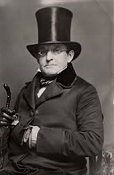

In 1861 Vassar Female College is chartered in Poughkeepsie, N.Y. (75 mi. N of New York City) by local English-born brewer Matthew Vassar (1792-1868) after making his fortune in land speculation, quickly dropping the word Female; it opens on Sept. 20, 1865, becoming the first women's college in the U.S.; its initial 30 faculty incl. 22 women; Maria Mitchell (1818-89) becomes the first female prof. of astronomy. it goes coed in 1969; "It is my hope to inaugurate a new era in the history and life of woman. I wish to give one sex all the advantages too long monopolized by the other. Ours is, and is to be, an institution for women not men." (Vassar)
In 1861 Yale awards the first doctor of philosophy (Ph.D.) degree in the U.S.
In 1861 the U. of Washington (originally Territorial U. of Washington) in Seattle opens.
In 1861 the U. of Va. (founded in 1819 by Thomas Jefferson) drains 90% of it student body to join the Confed. army, producing 1,481 officers, four maj.-gens., 21 brig. gens., and 67 cols., incl. "Gray Ghost" John S. Mosby, cmdr. of the 43rd Battalion Va. Cavalry.
In 1863 Adelphi U. is founded as Adelphi Academy in Brooklyn, N.Y., receiving a charter from the city in 1869 and the state on June 24, 1896; in 1921 it becomes a women's college; in 1946 it goes coed to admit male students on the GI Bill; in 1963 it becomes a univ.
On Mar. 31, 1863 Roman Catholic Boston College, founded by the Jesuits in South End, Boston, Mass. is chartered by the Mass. legislature, becomng the 2nd Jesuit higher ed. inst. in Mass. and the first in the Boston area;; in 1913 it moves to Chestnut Hill 6 mi. W of Boston.
In 1863 U.S. Protestants found Robert College in Bebek, Istanbul (Constantinople) between the two bridges over the Bosphorus Strait; it becomes Bogazici U. in 1971; alumni incl. Nobel Prize winner Orhan Pamuk.
In 1863 the U. of Mass. in Amherst, Mass. is founded as Mass. Agricultural College.
In 1863 private Roman Catholic La Salle U. (Fr. "the room") in Philadelphia, Penn. is founded by the Christian Brothers teaching order.

On Mar. 3, 1864 Colo. Seminary is founded in the mining camp of Denver, Colo. by Colo. Territory gov. (1862-5) John Evans (1814-97) for the Methodist Church; in 1880 it becomes the U. of Denver, becoming the oldest independent private univ. in the Rocky Mt. region.
On July 4, 1864 the U. of Bucharest in Romania is foundedby Prince Alexander John Cuza.
In 1864 Quaker coeducational Swarthmore College in Swarthmore (11 mi. SW of Philadelphia), Penn. is founded by James Mott et al.

In 1864 Boston Brahmin Unitarian pro-Union reformer (most cultivated man in the U.S.?) Charles Eliot Norton (1827-1908) become ed. of the North Am. Review (until 1868), going on to lead the introduction of European culture and secularization to Harvard U. and other univs. and end the regime of the old Protestant "moral philosophy" course.



In 1865 Cornell U. in Ithaca, N.Y. is founded by Western Union co-founder Ezra Cornell (1807-74) and N.Y. state sen. Andrew Dickson White (1832-1918) on a Morrill Act land grant after N.Y. Repub. gov. (1865-8) Reuben Eaton Fenton (1819-85) signs a bill creating it on Apr. 27.
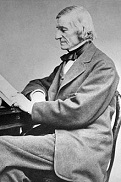
In 1865 Mass. Inst. of Tech. (MIT) is founded in Cambridge, Mass. downriver from Harvard U. by geologist William Barton Rogers (1804-82), power loom inventor Erastus Brigham Bigelow (1814-79) et al., and financed with $70K by Boston philanthropist William Johnson Walker (1790-1865), who in 1860 offered Harvard $130K to reform its medical school and was rejected when he demanded a whole new faculty, becoming one of the first institutions to require science students to duplicate famous lab experiments; it is coed from the beginning. the motto is "Mens et Manus" (Mind and Hand); athletic teams are named the Engineers; a 168-acre campus opens in 1916 along the N bank of the Charles River basin; by 2014 its alumni incl. 81 Nobel laureates.
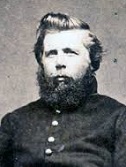
On Dec. 1, 1865 Shaw U. (originally Raleigh Inst. until 1875) is founded in Raleigh, N.C. by Baptist minister Henry Martin Tupper (1831-93) of the Am. Baptist Home Mission Society, becoming the first historically black college established in the U.S. after the U.S. Civil War.
In 1865 the U. of Kentucky in Lexington, Ky. is founded.
In 1865 the U. of Maine is founded in Orono, Maine.
On Oct. 12, 1866 Carleton College is founded in Northfield, Minn. by the Congregational Churches of Minn., named after benefactor William Carleton (1797-1876) of Charlestown, Mass.
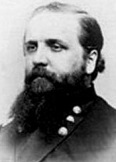
In 1866 Fisk U. in Nashville, Tenn. is founded for freed blacks by Tenn. Freedmen's Bureau head Brig. Gen. Clinton Bowen Fisk (1828-90), who endows it with $30K; sports teams are called the Bulldogs.

On Mar. 2, 1867 Howard U. in Washington, D.C. is chartered by the U.S. Congress for freed slaves and their descendants, managed by the U.S. Dept. of Interior under the dir. of white Union Gen. Oliver Otis Howard (1830-1909), AKA "the Christian General", who was a math prof. at West Point in 1857-61, lost his right arm in the Peninsular Campaign, fought at First Bull Run, Chancellorsville, and Gettysburg, commanded Sherman's right wing in the March to the Sea, and became the first commissioner of the Freedman's Bureau (1865-74); on Sept. 25 Congress charters it; he becomes its first pres. in 1869 (until 1874).
In 1867 Lewis & Clark College (originally Albany College Inst. until 1942) is founded in Albany, Ore., moving to Portland, Ore. in 1938; alumni incl. Monica Lewinsky, actor Penn Badgley, and Ore. gov. #38 Kate Brown.
On Mar. 23, 1868 the U. of Calif. at Berkeley (UCB) is founded on 160 acres of land 4 mi. N of Oakland via a merger of the private College of Calif. and the public Agricultural, Mining, and Mechanical Arts College of Oakland, becoming the first of 10 U of Calif. research univs.
On Feb. 15, 1869 the U. of Neb. is founded in Lincoln, Neb. as a land-grant univ., going on to pioneer the Nebraska Method of ecological study; the sports teams are called the Cornhuskers.
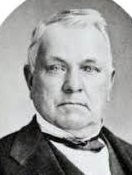
On May 6, 1869 Purdue U. is founded in Lafayette, Ind. after a donation of land and money by local businessman John Purdue (1802-76); classes start on Sept. 16, 1874, with 39 students and six teachers, going on to become the largest univ. in Ind.
On Oct. 16, 1869 Girton College at Cambridge U. is founded, becoming the first Oxbridge institution for women - it only took 6 cents. for the prudes to loosen up?

In 1869 after touring Europe in 1863-5 and studying their educational systems, then pub. "The New Education" in The Atlantic Monthly early in the year, containing the soundbyte: "We are righting a wilderness, physical and moral", Boston Brahmin chemist Charles William Eliot (1834-1926) becomes pres. #21 of Harvard U. (until 1909), the youngest so far (until ?), remodeling the curriculum on a liberal basis with electives, causing it to catch on with other univs., and raising admission requirements, causing secondary schools to follow suit.
On Mar. 24, 1870 Syracuse U. is founded in Syracuse, N.Y. is founded by the Methodist Episcopal Church after splitting off from Genesee Wesleyan Seminary.
On June 30, 1870 Loyola U. (originally St. Ignatuius College until 1909) is founded in Chicago, Ill. (pop. 300K) by Jesuits Father Arnold Damen; in 1912 it moves to Lake Shore.
On Oct. 10, 1870 RWTH Aachen U. in Aachen, North Rhine-Westphalia, Germany opens for lectures with 32 teachers and 223 engineering students mainly training for the mining industry in the Ruhr Valley, going on to become the largest technical univ. in Germany.
In 1871 after testimony by Jewish Cambridge U. senior wrangler Numa Edward Hartog (1846-71), the Universities Tests Act of 1871 opens Oxford and Cambridge to members of all religions, ditching the Anglican religious test - like Harold Abrahams?
In 1871 Alcorn State U. is founded near Lorman, Claiborne County, Miss. (80 mi. SW of Jackson, Miss.) by the Miss. legislature, becoming the first black land grant college in the U.S.; sports teams are nicknamed the Braves; alumni incl. civil rights hero Medgar Evers.
In 1871 the U. of Ark (UA) (originally Ark. Industrial U. until 1899) is founded in Fayetteville, Ark. at the foot of the Ozark Mts., holding its first classes next Jan. 22, becoming the state's flagship univ., with six main campuses incl. Pine Bluff (1873), Monticello (1910), Little Rock (1927), and Fort Smith (1928); U. of Ark. sports teams are called the Razorbacks.
In 1871 Newnham College is founded, becoming the 2nd oldest college for women at Cambridge U.
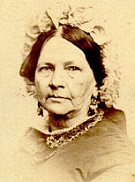
In 1871 Smith College for women is founded in Northampton, Mass. in "city in a forest" Pioneer Valley, Mass. by a $375K bequest from Sophia Smith (1796-1870), opening for classes in 1875 with six faculty and 14 students, going on to become the largest member of the Seven Sisters (and a breeding ground for lesbianism?); her will stipulates: "Sensible of what the Christian Religion has done for my sex, and believing that all education should be for the glory of God, and the good of man, I direct that the Holy Scriptures be daily and systematically read and studied in said College, and without giving preference to any sect or denomination, all the education and all the discipline shall be pervaded by the Spirit of Evangelical Christian Religion"; alumni incl. Julia Child, Betty Friedan, Nancy Reagan, Gloria Steinem, Sylvia Plath, Piper Kerman, and Grace Metallious.
In 1872 the U. College of Wales (later Aberystwyth U.) is founded in Aberystwyth, Cardiganshire (240 mi. NW of London)., opening in Oct. with 26 students.
In 1872 Va. Polytechnic Inst. (Va. Tech) (orginally Va. Agricultural and Mechanical College) in Blacksburg, Va. is founded as a public land grant univ. on the grounds of the former Methodist Preston & Olin Inst. and Solitude Farm; sports teams are called the Hokies. Scottish-born Alexander Graham Bell founds a school for teachers of the deaf in Boston, Mass.
In 1873 Texas Christian U. (originally the AddRan Male & Female College) in Ft. Worth, Tex. is founded by Addison Clark and Randolph Clark; sports teams are nicknamed the Horned Frogs.

In 1873 after the Methodist Episcopal Church South talks him into it, Vanderbilt U. in Nashville, Tenn. is founded with a $1M endowment by shipping magnate "Commodore" Cornelius Vanderbilt (1794-1877) as a way to heal the wounds of the U.S. Civil War, even though he had never been to the South.
In 1874 Colorado College is founded in Colo. Springs, Colo. on land designated by Denver & Rio Grande Railroad founder Gen. William Jackson Palmer (1836-1909) to copy Oberlin College.
On Oct. 1, 1875 Brigham Young U. is founded by the Mormons in Provo, Utah, becoming the largest religious univ. in the U.S.; it goes on to house the flagship Mormon Missionary Training Center in 1978.

In 1875 philanthropist Lydia Moss Bradley (1916-1908) becomes the first female member of a U.S. nat. bank board, the First Nat. Bank of Peoria, Ill., also becoming the first U.S. woman to draft a prenuptial agreement to protect her assets, going on to found Bradley U. (originally Bradley Polytechnic Inst.) in Peoria, Ill. in 1897.
In 1875 St. Joseph U. is founded in Beirut, Lebanon by French Jesuits, becoming a top academic institution in the Middle East.


On Feb. 22, 1876 Johns Hopkins U. is founded in Baltimore, Md., named after Anne Arundel County, Md.-born philanthropist Johns Hopkins (1795-1873), with Daniel Coit Gilman (1831-1908) as pres. #1 (until 1901); on May 7, 1889 Johns Hopkins Hospital is founded; in 1893 the Johns Hopkins U. School of Medicine opens.
On Mar. 14, 1876 after the Colo. legislature passes legislation on Nov. 7, 1861 naming Boulder, Colo. (25 mi. NW of Denver) as the site, and the cornerstone for the Old Main Bldg. is laid on Sept. 20, 1875, the U. of Colo. (CU) (home of the Buffaloes) is founded via an amendment to the state constitution before formal admission to statehood, which later causes its regents to consider themselves equal to or above the state legislature; it officially opens on Sept. 5, 1877; in 1912 the U. of Colo. Denver is founded; in 1965 the U. of Colo. Colorado Springs is founded.
In 1877 Roman Catholic Regis College is founded as Las Vegas College in Las Vegas, N.M., moving to Morrison, Colo. in 1884 as Sacred Heart College, then in 1887 to Denver, Colo.; in 1921 it becomes Regis College in honor of St. John Francis Regis; in 1991 it becomes Regis U.
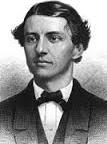

In 1879 Alton, Ill.-born educator Arthur Gilman (1837-1909), his Ala.-born 2nd wife Stella Scott Gilman, and Elizabeth Cabot Cary Agassiz (1822-1907), Boston-born wife of the late Swiss-born naturalist Louis Agassiz co-found Radcliffe College for women in Cambridge, Mass. (originally Private Collegiate Instruction for Women AKA Harvard Annex), which uses Harvard profs. to lust, er, teach women; in 1882 it becomes the Society for the College Instruction of Women, and in 1894 Radcliffe College; in 1963 it begins granting joint Harvard-Radcliffe diplomas; in 1977 it signs a "non-merger merger" agreement with Harvard, and is merged completely in 1999, with Radcliffe Yard becoming the Radcliffe Inst. for Advanced Study.

In 1880 Emerson College in Boston, Mass. is founded by Unitarian minister Charles Wesley Emerson (1837-1908) as a "school of oratory".
In 1880 Owens College in Manchester, England (founded 1851) joins the federal Victoria U., going on to receive a charter on June 24, 1904 as Victoria U. of Manchester; in 2004 it becomes the U. of Manchester.

In 1880 Case Inst. of Technology in Cleveland, Ohio is founded by Leonard Case Jr. (1820-80); in 1967 it unites with Western Reserve U. (founded in 1826) to form Case Western Reserve U.
In 1880 the U. of Southern Calif. (USC) is founded in Los Angeles, Calif; in 1965-? a member of each graduating class is nominated for an Oscar.
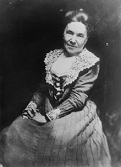
On Apr. 11, 1881 Spelman College (originally Atlanta Baptist Female Seminary unil 1884) is founded in Atlanta, Ga. for African-Am. women, named in honor of Laura Celestia "Cettie" Spelman Rockefeller (1839-1915), wife (since 1864) of benefactor John D. Rockefeller, going on to become the #1 historically black college in the U.S.
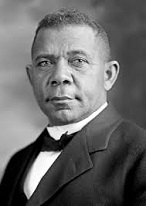
On July 4, 1881 African-Am. former slave Booker Taliaferro (pr. like toliver) Washington (1856-1915) founds Tuskegee U. (originally Tuskegee Normal School for Colored Teachers, and Tuskegee Normal and Industrial Inst.) in Tuskegee, Ala. to teach vocational skills to blacks, beginning with 30 students after former slave Lewis Adams gets white politician W.F. Foster to talk the state of Ala. into it in return for getting the black vote for his election to the state legislature; the state agrees to pay teachers' salaries but not for land or bldgs., so Booker has the students build them as part of their course; he brings in scientist George Washington Carver to teach, along with other top U.S. blacks - and together they become the fathers of a new black country?

In 1881 Drake U. in Des Moines, Iowa is founded for the Disciples of Christ by a maverick preacher from nearby Oskaloosa College (who takes most of the staff with him) and U.S. Civil War Brig. Gen. Francis Marion Drake (1830-1903), who becomes Iowa gov. #16 in 1896-8.
In 1881 the U. of Conn. (originally Storrs Agricultural School) is founded in Storrs, Conn. by brothers Charles and Augustus Storrs; in 1893 it becomes Storrs Agricultural College; in 1899 it becomes Conn. Agricultural College; in 1933 it becomes Conn. State College; in 1939 it becomes the U. of Conn.; in Sept. 2005 after it emerges from Hurricane Katrina unscathed, it is named by Slate mag. as "America's Best Place to Avoid Death Due to Natural Disaster".
In 1881 the U. of Liverpool (originally Univ. College Liverpool, followed in 1884 by Victoria U. at Liverpool until 1903) is founded in Liverpool, England; in 1894 prof. Oliver Lodge makes the world's first public radio transmission, and in 1896 takes the first surgical X-ray in the U.K.; in 1899 Liverpool U. Press is founded; in 1903 it receives a royal charter, becoming one of England's six original red brick civic univs.
On Sept. 15, 1883 after stalling since the Tex. legislature approved it on Feb. 11, 1858, the U. of Tex. at Austin (UTA) in Austin, Tex. opens, becoming the flagship univ. of the state; sports teams are called the Texas Longhorns.
In 1884 Miss. U. for Women (originally Industrial Inst. and College, later Miss. State College for Women) is founded in Columbus, Miss., becoming the first state-supported women's college in the U.S.; on July 1, 1982 the U.S. Supreme (Burger) Court rules 7-2 in Miss. U. for Women v. Hogan that a single-sex admissions policy for a state-support univ. violates the Equal Protection Clause of the 14th Amendment.

In 1884 Temple U. is founded in Philadelphia, by Baptist minister Dr. Russell Herman Conwell (1843-1925) of Conwell's Baptist Temple, becoming one of the top U.S. prof. schools incl. law, medicine, podiatry, pharmacy, dentistry, and architecture.

In 1885 Bryn Mawr (Gael. "high hill") College for women is founded in Bryn Mawr (4 mi. W of Philly), Penn. by the Quakers, with Martha Carey Thomas (1857-1935) as dean, becoming pres. in 1894-1922, becoming part of the Tri-College Consortium with Swarthmore College and Haverford College; in 1912 it becomes the first U.S. college to grant doctorates in social work; in 1931 the graduate school goes coed; alumni incl. Katharine Hepburn and Edith Hamilton.
In 1886 John Carroll U. (originally St. Ignatius College) is founded in University Heights, Ohio by the German Jesuits forced out of Germany by Bismarck's Kulturkampf; in Sept. 1968 it admits women.
In 1886 the Jesuit U. of Deusto in Bilbao, Spain opens; in 1916 it founds the first business college in Spain.
In 1886 Yeshiva U. in New York City opens, becoming the largest Jewish U. in the U.S.
On Sept. 17, 1887 Roman Catholic Jesuit Gonzaga U. in Spokane, Wash. is founded by Sicilian-born Father Joseph Cataldo (1837-1928), and named after St. Aloysius Gonzaga.
On Oct. 14, 1887 Pomona College is founded in Claremont, Calif. 35 mi. E of Los Angeles and 25 mi. W of San Bernardino as a clone of small New England colleges, with a board of trustees from Williams, Dartmouth, Bates, and Yale Colleges, later joining graduate-level Claremont College (founded 1925) and becoming part of the Claremont Colleges, all located within a 1 sq. mi. area, incl. the 5Cs (undergrad colleges) Pomona College, Scripps College (1926) (women only), Claremont McKenna College (1946) (economics, govt., public affairs), Harvey Mudd College (1955) (STEM), and Pitzer College (1963) (alternative interdisciplinary social sciences).
In 1887 Clark U. in Worcester, Mass. is founded, becoming the first all-graduate univ. in the U.S.
In 1887 the Imperial Inst. is opened by Queen Victoria to promote scientific research benefiting Britain's colonies and dominions; on July 8, 1907 Imperial College London in the Royal Borough of Kensington and Chelsea, London, England is formed from the merger of the Royal School of Mines (founded 1851), Royal College of Science (founded 1881), and City and Guilds College (founed 1878), joining the U. of London; in 2007 it leaves the U.. of London.
In 1887 the city of Whittier, Calif., named after Am. Quaker poet John Greenleaf Whittier (modern-day pop. 86K) is founded by Jonathan Bailey, whose Quaker meetings on his front porch attract Quaker settler, who build a meeting house along with Whittier College (originally Whittier Academy); it is incorporated at Feb. 25, 1898; the college is chartered by Calif. in 1901; sports teams are known as the Poets; alumni incl. U.S. pres. Richard M. Nixon.
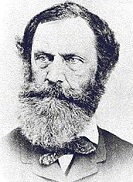
In Nov. 1889 Clemson U. (originally Clemson Agricultural College of S.C. until 1964) in Clemson, S.C. is founded as an agricultural college by a land bequest from Thomas Green Clemson (1807-88), husband of John C. Calhoun's daughter Anna Maria Calhoun, sited on Fort Hill, the John C. Calhoun's 1825-50 home, and modeled after Miss. State U., admitting only white male students, although blacks and women aren't officially banned; it also houses a military college; it goes coed in 1955; sports teams are called the Tigers, with the tiger paw becoming the logo in 1970; alumni incl. U.S. Supreme Court justice James F. Byrnes, S.C. gov. Nikki Haley, U.S. Sen. (D-S.C.) Strom Thurmond, and Chicago Bears player William "Refrigerator" Perry.
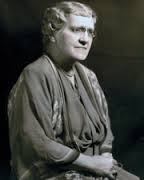
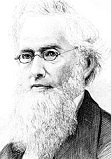
In 1889 after Columbia U. refuses to admit women but lets them audit classes, causing her to create a committee of 50 prominent New Yorkers to support it, Barnard College for women is founded in Morningside Heights, Manhattan, N.Y. (across from Columbia U.) by Annie Nathan Meyer (1867-1951), named after late pres. #10 of Columbia U. (1864-89) Frederick Augustus Porter Barnard (1809-89); in 1983 when Columbia U. goes coed, it doesn't.
On Dec. 18, 1890 the U. of Okla. in Norman, Okla. is founded by the Okla. legislature (sports team nickname: Sooners), along with the U. of Central Okla. in Edmond, Okla. on Dec. 24 (sports team nickname: Bronchos), and Okla. State U. (originally Okla. Territorial Agricultural and Mechanical (A&M) College) in Stillwater, Okla. on Dec. 25 (sports team nickname: Cowboys/Cowgirls).


On Oct. 1, 1891 Stanford U. (originally called Leland Stanford Jr. Univ.) in Calif., founded in 1885 by Calif. gov. #8 (1862-3) Amasa Leland Stanford (1824-93) officially opens, with former (1872-85) Indiana U. pres. David Starr Jordan (1851-1931) (an evolutionist ichthyologist) as pres. #1 (until 1913); it is coed from the start; tuition is free until 1920.
In 1891 Buena Vista U. (originally Buena Vista College until 1995) is founded in Storm Lake, Iowa by the Presbyterian Church USA; sports teams are nicknamed the Beavers; alumni incl. Montreal Expos gen. mgr. Jim Fanning.

In 1891 Calif. Inst. of Technology (Caltech) (originally Throop Polytechnic Inst.) is founded in Pasadena, Calif. by businessman-politician (mayor #3 of Pasadena in 1888-90) Amos Gager Throop (1811-94), going on to become home of the Mount Wilson Observatory in 1904.
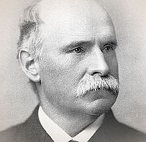
In 1891 Drexel U. (originally the Drexel Inst. of Art, Science, and Industry until 1936, then Drexel Inst. of Technology until 1970) is founded in Philadelphia, Penn. by banker-financier Anthony Joseph Drexel Sr. (1826-93) for instruction in "practical arts and sciences" for men and women.

On Oct. 1, 1892 after the Am. Baptist Education Society founded it in 1890 as a coeducational secular institution to replace the first Baptist univ. of the same name that closed in 1886, the U. of Chicago in Ill. opens on land worth $200K donated in 1890 by Chicago dept. store king Marshall Field (1834-1906), who also donates $1M to found the Chicago Nat. History (Field) Museum (Columbian Museum) (changed to Field Museum in 1905), housed in the Chicago World's Fair Fine Arts Bldg. in 1894, with another $4M for a new white marble bldg. in Grant Park plus $4M for maintenance.
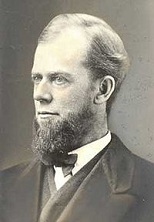
On Dec. 5, 1892 after efforts by Methodist Episcopal Church bishop (chancellor #1) John Fletcher Hurst (1834-1903), the U.S. Congress passes a bill establishing American U. in Washington, D.C., which is signed by Pres. Benjamin Harrison on Feb. 24, 1893, opening for classes on Oct. 6, 1914 with 28 students; in 1949 it merges with the Wash. College of Law (founded in 1896 as the first coed law school in D.C.); it goes on to become known for political activism; alumni incl. Alice Paul, Robert Byrd, Goldie Hawn, David Gregory, Neil Cavuto, Judy Smith, Barry Levinson, and Star Jones.

In 1894 Easton, Penn.-born James McKeen Cattell (1860-1944) and Columbia, S.C.-born James Mark Baldwin (1861-1934) found the Psychological Review to compete with the Am. Journal of Psychology (1887); Cattell goes on to make psychology into a respectable academic discipline, the NYT calling him "the Dean of American Science"; too bad, his opposition to U.S. involvement in WWII gets him fired from Columbia U., causing U.S. univs. to establish tenure.
In 1896 the U. of the Witwatersrand (originally South African School of Mines until 1904, then Transvaal Technical Inst. until 1906, Transvaal U. College until 1910, South African School of Mines and Technology until 1920, and Univ. College, Johannesburg until 1922) is founded in Johannesburg, South Africa, becoming the #1 univ. in South Africa; in 1959 the Extension of University Education Act forces it to comply with apartheid, ending its policy of admitting black students on merit; in 1990 apartheid is abolished, and the univ. is desegregated; alumni incl. writer Nadine Gordimer and rocker Manfred Mann - you were divine, it's been three years, get on with it?
On July 3, 1898 Peking U. (originally the Imperial U. of Peking) in Peking (modern-day Beijing), China is founded, becoming the first modern nat. univ. in China, spawning the New Culture Movement, May 4th Movement, 1989 Tiananmen Square Protests et al., becoming their #1 univ. in modern times; alumni incl. Mao Zedong (Tse-tung).

In July 1898 after turning Theosophist, British freethinker activist Annie Besant (1847-1933) founds Central Hindu College in Varanasi, India, becoming the nucleus of Banaras Hindu U. (1916).
On Dec. 29, 1898 Zeta Beta Tau ("Zebes") Jewish fraternity is founded by Richard James Horatio Gottheil (1862-1936) at Columbia U. as a Zionist youth society, with the initials ZBT interpreted from the Book of Isaiah to mean "All Men Are Brothers"; by 2000 it has 130K brothers and 80 student chapters; famous brothers incl. Jack Benny, Leonard Bernstein, Peter Yarrow, Burton Baskin, Samuel Goldwyn, Jack Warner, Armand Hammer, George Macy, Bernard Gimbel, William S. Paley, Newton Minow, Robert Shapiro, Mike Wallace, and Jerry Bruckheimer.

On Dec. 29, 1898 Zeta Beta Tau ("Zebes") Jewish fraternity is founded by Richard James Horatio Gottheil (1862-1936) at Columbia U. as a Zionist youth society, with the initials ZBT interpreted from the Book of Isaiah to mean "All Men Are Brothers"; by 2000 it has 130K brothers and 80 student chapters; famous brothers incl. Jack Benny, Leonard Bernstein, Peter Yarrow, Burton Baskin, Samuel Goldwyn, Jack Warner, Armand Hammer, George Macy, Bernard Gimbel, William S. Paley, Newton Minow, Robert Shapiro, Mike Wallace, and Jerry Bruckheimer.
In 1898 DePaul U. is founded in Chicago, Ill. by the Roman Catholic Vicentians, going on to become the largest Roman Catholic univ. in the U.S.
In 1899 Ruskin College at Oxford U. is founded, named after British radical art critic John Ruskin (1819-1900), becoming the first residential college in the U.K. for working men.

In 1900 Carnegie Technical Schools are founded in Pittsburgh, Penn. by Fife, Scotland-born philanthropist Andrew Carnegie (1835-1919) with a $10M donation, with the motto "My heart is in the work", changing the name in 1912 to Carnegie Inst. of Technology (CIT); in 1967 it merges with the Mellon Inst. of Industrial Research (founded 1913) to become Carnegie Mellon U.; in 1973 it goes coed.

In 1900 Bengali polymath Rabindranath Tagore (1861-1941) founds the Santiniketan School 100 mi. N of Calcutta in West Bengal, India, which eventually becomes Visva-Bharati U., becoming known as a mixing pot for East and West.
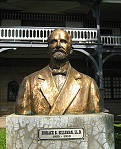
In 1901 Silliman U. (originally Silliman Inst. for Boys) is founded in Dumaguete, Negros Oriental, Philippines by the Presbyterian Board of Foreign Missions, named after philanthropist Horace Brinsmade Silliman (1825-1910), becoming the first Am. and Protestant univ. in the Philippines, and first Am. univ. in Asia, becoming a college in 1910, and a univ. in 1938; the first Filipino pres. is appointed in 1952.
In 1901 Sweet Briar College is founded in Sweet Briar, Va. for women, becoming known for riding to hounds in the Blue Ridge Mts.

In 1904 Mary McLeod Bethune (1875-1955) founds Bethune-Cookman U. (originally Daytona Educational and Industrial Training School until 1941) in Daytona Beach, Fla., becoming the first black college founded by a black woman, with standards comparable to white schools; in 1923 it merges with the Cookman Inst. of Jacksonville, Fla.; in 1924 it affiliates with the Methodist Church.
In 1904 the U. of Leeds (originally Yorkshire College of Science) in Leeds, West Yorkshire, England is chartered by Edward VII, affiliated with the federal Victoria U. alongside Owens College and Univ. College Liverpool, incorporating the Leeds School of Medicine (founded 1831).

On Oct. 9, 1905 after Harvard U. pres. (1869-1909) Charles William Eliot (1834-1926), ed. of the Harvard Classics, known for turning Harvard into an internat. research univ. and giving blacks W.E.B. DuBois et al. opportunities comes out in opposition to college football, calling it "a fight whose strategy and ethics are those of war", where "the weaker man is considered the legitimate prey of the stronger", concluding "no sport is wholesome in which ungenerous or mean acts which easily escape detection contribute to victory", causing The New York Times, Harper's mag., McClure's mag., and Nation mag. to back him up, calling for reform or outright abolishment of the sport, Pres. Theodore Roosevelt holds a meeting at the White House with Walter Camp, Bill Reid, and Arthur T. Hillebrand representing Yale, Harvard, and Princeton, talking them into saving the sport via rule changes; too bad, on Nov. 25 19-y.-o. Union College halfback Harold Moore is knocked-out in a game against NYU and dies of a cerebral hemorrhage six hours later, causing NYU pres. Henry MacCracken to call for protective headwear for athletes, and the Cincinnati Commercial Tribune to run the cartoon "Grim Reaper Smiles on the Goalposts" on Dec. 3, becoming known as football's first concussion crisis; on Dec. 28 after two White House conferences convened by Pres. Theodore Roosevelt to "encourage reforms" in college football to prevent injuries and deaths, followed by a meeting of 13 U.S. colleges and univs. organized by NYU chancellor Henry MacCracken, a meeting of 62 higher education institutions appoints the Am. Football Rules Committee, which convenes next Jan. 12, banning the flying wedge, creating the neutral zone, and increasing the distance for a first down from 5-10 yards; next Mar. 31 they form the Intercollegiate Athletic Assoc. of the U.S. (IAAUS), which changes its name to the Nat. Collegiate Athletic Assoc. (NCAA) in 1910; in 1921 it conducts the first NCAA nat. championship, the Nat. Collegiate Track and Field Championships; in 1939 it conducts its first basketball championship; meanwhile failing to abolish football, lame retro Eliot goes after baseball, basketball, and hockey, uttering the soundbyte: "I understand that a curve ball is thrown with a deliberate attempt to deceive. Surely this is not an ability we should want to foster at Harvard" - since I got in the loop I can see the future?
In 1905 the Nat. U of Singapore (originally King Edward VII College of Medicine until Oct. 8 1949, U. of Malaya, Singapire until 1962, and U. of Singapore until 1980) is founded by Tan Jiak Kim.
In 1906 Harvard U. offers its first "concentrations", history and lit.
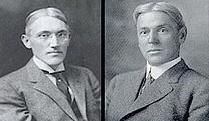
In 1906 Pace U. in Manhattan, N.Y. is founded by brothers Homer St. Clair Pace (1879-1942) and Charles Ashford Pace (-1940) to teach accounting and business, building expansion campuses in Pleasantville, N.Y. and White Plains, N.Y.
In 1907 the U. of Hawaii is founded in Manoa, Honolulu, Hawaii, becoming the flagship of the U. of Hawaii system; alumni incl. both parents of U.S. pres. Barack Obama.
In 1907 the U. of Saskatechewan is founded in Saskatoon, Canada, emphasizing agriculture like its brother U. of Alberta.
On Dec. 21, 1908 the Cairo U. is founded in Giza City, Giza, Egypt as a secular Muslim univ., becoming the biggest in the Arab world; in 1940-52 it is called King Fuad I U.
In 1908 the U. of Alberta in Edmonton, Alberta, Canada is founded.
In 1908 James Madison U. in Harrisonburg, Va. is founded as State Normal and Industrial School for Women, admitting men in 1946 and going coed in 1966.
In 1908 Montclair State U. (originally N.J. State Normal School at Montclair, then Montclair State Teachers College in 1927, then Montclair State College in 1958 until 1994) in Montclair, N.J. opens; alumni incl. Yogi Berra, Jason Biggs, and Allen Ginsberg.
In 1908 Queen's U. is dissolved, and the Nat. U. of Ireland is founded, consisting of colleges in Cork, Galway, and Maynooth, followed by Dublin in 1909.
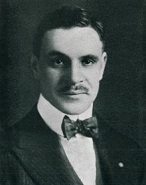
On Nov. 2, 1909 Boston U. grad. Warren Albert Cole (1889-1968) founds Lambda Chi Alpha, which goes on to become one of the largest men's gen. fraternities in North Am., with 268K members and chapters at 300 univs. by the end of the cent.; it goes on to become the first fraternity to abolish pledging; members incl. WWII heroes Jimmy Doolittle and Pappy Boyington, politicians John Danforth and Ron Paul, actors Claude Akins, Jonathan Frakes, and Will Geer, Dick Tracy creator Chester Gould, musicians Frankie Laine and John Tesh, and athletes Bill Bradley, Fred Biletnikoff, Mark Brunell, and Mark Kelso.
On Dec. 10, 1909 (50th anniv. of Queensland's separation from N.S.S.) the U. of Queensland is founded in Brisbane, Australia, becoming Australia's 5th oldest univ.

On Sept. 22, 1910 Mexican historian Justo Sierra Mendez (1848-1912) refounds the Royal and Pontifical U. of Mexico (founded in 1551 and closed in 1865) as the Nat. Autonomous U. of Mexico, receiving autonomy from the govt. in 1929, going on to become the second oldest Am. univ. to survive to modern times after the U. of Lima, and the most important in the Spanish-speaking world.
In 1910 Kent State U. is founded in Kent, Ohio as a teacher training school, holding its first classes in 1912; in the 1960s-1970s it becomes known for student activism against the Vietnam War.
In 1911 Fort Lewis College is founded in Durango, Colo in an old military fort to educate Native Am. students, going to award 16% of all bachelor degrees earned by Native Am. students.
In 1911 Loyola Marymount U. in Los Angeles, Calif. starts out as Los Angeles College, successor to St. Vincent's College (founded in 1865), which becomes Loyola College of Los Angeles in 1918, and Loyola U. of Los Angeles in 1930; in 1973 it merges with Marymount Junior College (founded in 1932).
In 1913 Erasmus U. Rotterdam (EUR) (originally the Netherlands School of Commerce until 1939, then Netherland School of Economics) is founded in Rotterdam, Netherlands, named after 15th cent. humanist Desiderius Erasmus Roterodamus, going on to become one of the top-10 business schools in Europe.
In 1914 the U. of Frankfurt am Main is founded in Frankfurt am Main, Prussia, Germany by the citizens; in 1932 it becomes Goethe U. Frankfurt.
In 1915 after Stanford U. dismisses economic prof. Edward Alsworth Roth over criticism of the Southern Pacific Railroad for hiring Chinese laborers, the Am. Assoc. of Univ. Professors is founded in Washington, D.C. by John Dewey and Arthur O. Lovejoy to promote academic freedom, reaching 47K members on 500 U.S. campuses by 2017.
On Mar. 26, 1917 Chulalongkorn U. is founded in Bangkok, Thailand by Rama VI, becoming the first Western-style univ. in Thailand.
On July 24, 1918 the Hebrew U. of Jerusalem is founded, becoming Israel's 2nd oldest univ.; the first board of govs. incl. Albert Einstein, Sigmund Freud, Martin Buber, and Chaim Weizmann; students later incl. seven Nobel Prize winners and four Israeli PMs. On Apr. 1 its campus on Mount Scopus in Jerusalem is opened by Aaron Shulov and Yocheved Shulov et al., with civic planning by Sir Patrick Geddes (1854-1932) and a bldg. designed by Eric Mendelsohn; the cornerstone is laid by Lord Balfour; chancellor #1 is San Francisco, Calif.-born Reform rabbi Judah Leon Magnes (1877-1948) (co-founder of the Am. Jewish Committee in 1906), who went to Palestine in 1922 and became a leader of the univ. movement, going on to advocate Arab-Jewish cooperation and turn the univ. into a center of Muslim as well as Hebraic learning.
On May 7, 1919 Adam Mickiewicz U. in Poznan (originally U. of the Piasts until 1955) opens, named after Polish Romantic poet Adam Mickiewitz, becoming one of the top-3 univs. in Poland.
In 1919 the Air Force Inst. of Technology is founded at Wright-Patterson AFB near Dayton, Ohio as a prof. graduate school for the U.S. military.
In 1920 Birbeck College of London U. in London, England is founded from the London Mechanics' Inst. (founded 1823) to give part-time tuition to working adults.
In 1920 the U. of New Haven (originally New Haven YMCA Junior College) is founded in New Haven, Conn. as a branch of Northeastern U., starting out sharing facilities with Yale U.; in 1926 it is chartered as New Haven College; in 1970 it receives it current name, becoming known for its undergrad engineering program.
In 1920 Oxford U. grants its first degrees to women.
On Mar. 17, 1921 the honor society Phi Alpha Theta (originally Univ. Historical Society) is founded at the U. of Ark. by Nels Cleven for students and professors of history, growing to 350K members by 2017.
In 1923 Damascus U. (originally Syrian U. until 1958) is founded in Damascus, Syria from the merger of the School of Medicine (founded 1903) and the Inst. of Law (founded 1913), becoming the #1 univ. of the Arab world until the reigns of Hafez al-Assad and Bashar al-Assad.

In 1924 the Technion (Israel Institute of Technology) in Haifa, endorsed by Albert Einstein, who visited in 1923 and planted the first palm tree finally opens its doors with 17 students after foundations were laid in 1912, and now the did-I-mention smartest people on Earth are unleashed; in 1925 British Zionist industrialist Alfred Moritz Mond, 1st Baron Melchett (1868-1930) becomes pres. #1.

In 1926 the Scholastic Achievement Test (SAT), based on the U.S. Army Alpha IQ Test, designed by Princeton psychologist Carl Campbell Brigham (1890-1943) (author of a 1923 book concluding that the Nordic race is intellectually superior to the Alpine and Mediterranean races, and that miscegenation between whites and Negroes is a horrible menace, but later allegedly flip-flops) is founded to test U.S. students for aptitude for college; in 1947 the Educational Testing Service (ETS) is chartered, and the test becomes the usual requirement for scholarship applicants.

On Sept. 12, 1927 non-denominational Protestant Bob Jones U. in Greenville, S.C. is founded by Christian fundamentalist evangelist Robert Reynolds "Bob" Jones Sr. (1883-1968) after his friend William Jennings Bryan tells him in 1924 that "If schools and colleges don't quit teaching evolution as a fact, we are going to become a nation of atheists"; his first class has 88 students.
In 1927 the name Seven Sisters is first used for seven top liberal arts women's colleges in the NE U.S., incl. Barnard College (New York City, 1889), Bryn Mawr College (Bryn Mawr, Penn., 1885), Mount Holyoke College (South Hadley, Mass., 1837), Radcliffe College (Cambridge, Mass., 1879), Smith College (Northampton, Mass., 1871), Vassar College (Poughkeepsie, N.Y., 1861), and Wellesley College (Wellesley, Mass., 1870); all but Radcliffe are also called "Hidden Ivies"; Radcliffe merges with Harvard in 1963-99, and Vassar goes co-ed in 1969.
In 1927 the U. of Hull (originally the Univ. College Hull) is founded in Kingston upon Hull, East Riding of Yorkshire, England by Prince Albert, Duke of York (later George VI), becoming the home of poet Philip Larkin; alumni incl. Anthony Minghella.
On Nov. 1, 1929 Roman Catholic Mundelein College in N Chicago, Ill. is founded; in 1991 it merges with Loyola U.
In 1929 Quinnipiac U. (originally Conn. College of Commerce) in Hamden, Conn. at the foot of Sleeping Giant State Park, named after the Quinnipac (Eansketambawg) (Algonq. "original people") people is founded by Samuel W. Tator, Judge Phillip Troup (-1939) et al. in reaction to the abandonment of its New Haven, Conn. program by Northeastern U., becoming known for its Polling Inst.; in 1935 it is renamed to Junior College of Commerce, then Quinnipiac College in 1951, and Quinnipiac U. in 2000.
In 1930 Brooklyn College is founded in Brooklyn, N.Y. via a merger of Hunter College (for women) and the City College of New York (for men), becoming the first public coed liberal arts college in New York City, becoming known as "the poor man's Harvard" for its low tuition and capable faculty; alumni incl. Barbara Boxer, Shirley Chisholm, Michael Cunningham, Alan M. Dershowitz, Allen Ginsberg, Abraham Maslow, Frank McCourt, and Bernie Sanders.
In the 1930s City College of New York (CCNY) (founded 1847) becomes known as the Poor Man's Harvard, educating a generation of Jewish intellectuals shut out of elite private colleges, generating 10 Nobel Prize Winners et al.

In 1933 Black Mountain College in Asheville, N.C. is founded (until 1957) by John Andrew Rice Jr. (1888-1968), becoming a leading progressive school that stresses the study of art and follows the principles of John Dewey; in 1941 it opens the Lake Eden campus; it later hosts R. Buckminster Fuller's first geodesic dome.
In 1933 Ottoman Imperial U. (founded 1870) is reorganized as Istanbul U..
In 1934 the U. of Tehran is founded in Tehran, Iran, becoming its first modern univ., "the mother univ. of Iran"; in 1935 it goes coed.
On Sept. 23, 1935 Hofstra U., founded in Hempstead, Long Island, N.Y. by a bequest of wealthy lumberman William Sake Hofstra (1861-1932) as an extension of NYU under the name Nassau College - Hofstra Memorial of New York U. holds its first classes; on Jan. 16, 1937 it is renamed to Hofstra College, separating from NYU in 1939, and granted a charter on Feb. 16, 1940, becoming known for a replica of the Globe Theatre and for hosting U.S. pres. conferences and debates.
On Sept. 21, 1937 Pepperdine U. in Malibu, Calif. is founded by Western Auto Supply Co. magnate George Pepperdine and affiliated with the Churches of Christ; its sports team name is the Waves.
In 1938 the U. of Alexandria is founded in Alexandria, Egypt, becoming independent in 1942 under the name Farouk U. (until 1952), going on to become the 2nd largest univ. in Egypt after Cairo U.
Maybe a little March madness will bring sanity to the nation? On Mar. 3, 1939 the Goldfish Swallowing Craze begins at Harvard U. when freshman Lothrop Withington Jr. swallows one on a $10 bet and it spreads across college campuses nationwide; a Middlesex College student downs a record 67 this year, which isn't beaten until 1967, when a St. Joseph's College undergrad downs 199.
In 1942 Fairfield U. is founded in Fairfield, Conn. by the Jesuits.
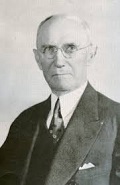
In 1942 Fairleigh Dickinson U. in Rutherford, N.J. is founded by medical supply magnate Col. Fairleigh S. Dickinson Sr. (1866-1948).


On Apr. 25, 1944 the United Negro College Fund (UNCF) is founded in Washington, D.C. by Tuskegee U. pres. (1935-53) Frederick Douglass Patterson (1901-88), Mary McLeod Bethune (1875-1955) et al.; by 2005 it supports 65K students in 900 educational institutions with $113M in grants and scholarships.
On June 22, 1944 after a nationwide lobbying effort by the Am. Legion, the U.S. G.I. Bill (Servicemen's Readjustment Act of 1944) is signed by Pres. FDR, giving tuition and other benefits to veterans to attend h.s., college, or vocational schools, along with low-cost mortgages, low-interest business loans, and 1 year of unemployment compensation; by 1956 7.8M veterans use it, dramatically increasing the quality of the U.S. workforce; the stigma of Socialism is blunted by the mantra that they earned it by fighting for their country, and the bums who stayed at home should feel privileged to pay?

In 1947 Pontotoc County, Okla. Choctaw-Cherokee descent Baptist preacher Oral Robber, er, Granville Oral Roberts (1918-2009) has a magic moment with the Third Epistle of John, causing him to buy a Buick, see God, and turn Pentecostalist, going on radio, followed by TV in 1954, conducting 300+ faith healing crusades in the U.S. and six continents, laying hands on 2M people, claiming to heal them of all ailments and even to be able to raise the dead, raising lakes of cash via direct-mail campaigns under the banner of seed-faith, maxing out at $120M/year and employing 2.3K, going on to become "the Godfather of the Charismatic Movement", founding the Oral Roberts Evangelistic Assoc. in Tulsa, Okla., followed by Oral Roberts U. in 1963 in Tulsa, whose students must sign an honor code to not engage in premarital sex, drink, or smoke; on Mar. 17, 1968 he and his wife convert to the United Methodist Church.

On Oct. 20, 1948 Brandeis U. is founded in Waltham, Mass. (9 mi. W of Boston), becoming the first Jewish nondenominational college in the U.S.; German-born English prof. Ludwig Lewisohn (1882-1955), who grew up Methodist until he graduated from Columbia U. and was told that a U.S. univ. will never hire a Jew to teach English becomes one of the founding faculty members; in 1944 the Fashion Inst. of Technology (FIT) in Manhattan, N.Y. is founded, becoming one of the top five fashion schools on Earth after joining SUNY.
On Nov. 17, 1948 University College is founded in Ibadan, Nigeria, becoming affiliated with London U., drawing students from all over Africa.
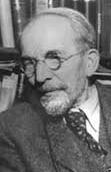
In 1948 the Free U. of Berlin is founded in West Berlin, West Germany from parts of the Commie-controlled Humboldt U. by German historian Friedrich Meinecke (1862-1954) et al. - I go to FU?

In 1948 the State U. of New York (SUNY) is founded by N.Y. Rep. gov. #47 (1943-54) Thomas Edmund Dewey (1902-71), growing to become the largest U.S. univ.
On Oct. 1, 1949 George Mason U. is founded in Fairfax, Va.; in Jan. 1956 the Va. legislature makes it a branch of the U. of Va., going independent in 1972, developing a strong program in economics.
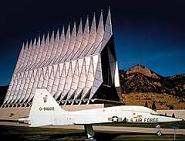
On Apr. 1, 1954 the U.S. Air Force Academy is established at Lowry AFB in Denver, Colo., modelled after West Point and Annapolis; it opens next year, and next July 11 it graduates its first class; on Aug. 29, 1958 it moves to Colorado Springs, Colo. In 1962 the cool space-age Air Force Academy Cadet Chapel (begun 1956), designed by Chicago architect Walter A. Netsch (1920-2008) is built on the campus of the new Air Force Academy in Colo. Springs, Colo., near Pikes Peak; on Sept. 22 $3.5M Falcon Stadium opens on the Air Force Academy campus, and the first football game is played with Colo. State U.; the authorities make the mistake of opening the whole campus to visitors, and 85K show up, creating the biggest traffic jam in Colo. history (until ?); USAF Gen. Jimmy Stewart gives a speech.
On Sept. 26, 1955 Brigham Young U. - Hawaii in Laie, Honolulu, Hawaii on the N shore of Oahu is founded by the LDS Church; on Oct. 12, 1963 it opens the Polynesian Cultural Center, which becomes a hit with tourists.
On Nov. 15, 1956 the Middle East Technical U. is founded in Ankara, Turkey, becoming Turkey's #1 univ.
In 1956 the U. of South Fla. is founded by U.S. Rep. (D-Fla.) (1953-8) Sam Melville Gibbons (1920-2012), becoming the first univ. founded in Fla. in the 20th cent.
On Sept. 16, 1957 the U. of Tirana (originally State U. of Tirana) in Tirana, Albania is founded from the merger of five other higher ed. institutions, incl. the Inst. of Sciences (founded in 1947); in 1985-92 it is renamed Enver Hoxha U. of Tirana.
In fall 1957 five student activists at the U. of Calif. at Berkeley (UCB) run for student govt. office on a common slate, forming the org. known as SLATE, beginning campus activism in U.S.
In 1957 the U. of Baghdad is founded in Baghdad, Iraq, becoming the biggest in Iraq, and 2nd biggest Arab univ. behind the U. of Cairo.
In 1957 the U. of Nevada, Las Vegas (UNLV) is founded in Paradise (near Las Vegas), Nev.


In 1959 new U. of Calif. pres. (1958-67) Clark Kerr (1911-2003) utters the immortal soundbyte: "The employers will love this generation [of college students]... They are going to be easy to handle. There aren't going to be any riots." Also in 1959 the word "bit" came into vogue in U.S.: "the protest bit", "the love bit", etc.; nothing about 1s and 0s yet, although the same year Austrian-born Am. business expert Peter Ferdinand Drucker (1909-2005) coined the term "knowledge worker", who's the ultimate, guess, starts with TLW.
On Feb. 27, 1961 James Cook U. of North Queensland (originally Univ. College of Townsville until Apr. 29, 1970) is founded, becoming the 2nd univ. in Queensland, Australia after the U. of Queensland (1909).
In 1961 Darwin College is founded, becoming the first graduate college at Cambridge U.
In 1962 Ruhr U. is founded in Bochum, Germany, becoming the first new public univ. in Germany since WWII.

In 1962 St. Catherine's College (AKA St. Catz) at Oxford U. is founded by English historian Alan Louis Charles Bullock (1914-2004).
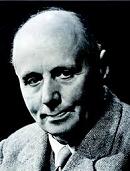
In 1962 United World Colleges is founded in Britain by German educator (founder of Gordonstoun School) Kurt Matthias Robert Martin Hahn (1886-1974) as an educational movement of schools and colleges around the world, offering the Internat. Baccalaureate.
In 1964 the U. of Strathclyde in Glasgow, Scotland is founded.
In Apr. 1967 the U. of Mosul is founded in Mosul, Iraq, becoming the 2nd biggest in Iraq after the U. of Baghdad; in 2014 ISIS closes it and destroys 8K books and 100K mss.; in Mar. 2016 the Combined Joint Task Force bombs it.
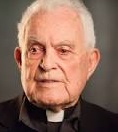
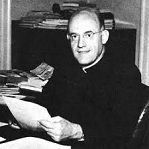
On July 23, 1967 in response to Vatican II, the Land O'Lakes Statement (Statement on the Nature of the Contemporary Catholic University) is signed by two dozen Roman Catholic college educators at a retreat in Land O'Lakes, Wisc., invited by Notre Dame U. pres. #15 (1952-87) Holy Cross Father Theodore Martin Hesburgh (1917-2015) St. Louis U. pres. (1949-74) Jesuit Father Paul Clare Reinert (1910-2001), declaring that Catholic univs. must have academic freedom and institutional autonomy from the Catholic hierarchy along with commitment to Catholic faith and life; in practice, it leads to total secularization, filling Catholic univs. with leftists; "Some consider it a revolutionary road map for Catholic education in the modern world; others have declared a half-century of devastation. Others designate it a mixed legacy" (Assoc. of Catholic Colleges and Univs.); "The crisis in Catholic education under attack from the secularist agenda [was] set forth 50 years ago by the disastrous Land O' Lakes Statement" (Cardinal Newman Society)




The no-king rule rules brainy King's College? On Apr. 23, 1968 an 8-day sit-in begins at the 17.5K-student campus of Columbia U. in New York City, incl. students, the SDS, and black activists H. Rap Brown and Stokely Carmichael, protesting the you know what war as well as the construction of a gym in an area they claim is needed for low-cost housing, causing construction to halt on Apr. 25, after which the students, led by Mark William Rudd (1947-) of the SDS take over five bldgs. in a week-long sit-in, holding several officials hostage for 24 hours, and trashing the offices of pres. #14 (since 1958) Grayson Louis Kirk (1903-97), demanding amnesty for protesters, causing provost (since 1967) David Bicknell Truman (1934-) (who has already let them have a 2-week break between classes and finals and allowed men to close their dorm room doors when their babes are present) to call in the pigs on Apr. 30, who make 628 arrests; on May 5 classes are suspended, and a 2nd occupation of Hamilton Hall starting on May 17 ends with a police raid on May 22, with 17 pigs and 81 students injured, and 177 students arrested; 30 students end up suspended, and a number of students walk out of the graduation ceremony; a commission appointed by the faculty concludes that "the seizure of the buildings was not simply the work of a few radicals" but "involved a significant portion of the student body who had become disenchanted with the operation of their university"; before the ruckus started, French-born historian Jacques Martin Barzun (1907-)2012 (provost and dean of the graduate school and faculties since 1955) was ridiculed for claiming that the liberal arts are "dead or dying".
Prague has a whole spring, France gets just May? On May 2, 1968 (Thur.) the French May of 1968, a near-repeat of the 1789 French Rev. begins when student outbreaks that began on Mar. 22 spread to Paris' Latin Quarter (Sorbonne et al.), and erupt into student riots; on May 3 the police evacuate the Sorbonne after arresting 600 (100 injured), just making them madder; on May 6 (Mon.), AKA Bloody Monday hundreds of thousands of students riot; on May 10 and May 11 ("Night of the Barricades") students in the Latin Quarter erect cobblestone barricades, fly red flags, and overturn 188 cars, burning many of them with Molotov cocktails, injuring 1K, incl. 251 police; on May 11 the revolt spreads to 10M French workers, who begin striking; on May 18 pres. Charles de Gaulle cuts a visit to Romania short to return to Paris, and calls in troops, causing the students' rev. spirit to begin to dissipate, and the strikes to stop by May 27; after philosopher Jean-Paul Sartre (1905-80) is arrested for civil disobedience, de Gaulle intervenes and pardons him, with the soundbyte "You don't arrest Voltaire"; on May 24 de Gaulle gives a radio address, calling for a referendum on reforms to end the violence, with the soundbyte "Back me or sack me"; on May 24 protesters set fire to the Paris Bourse after French-born German Jewish student Daniel Marc Cohn-Bendit ("Danny the Red") (1945-), who took part in the initial revolt in Nanterre is exiled as a threat to public order; after trade unions sign major agreements on wages and working conditions, workers begin returning to the job on May 27; on May 30-31 de Gaulle dissolves the French nat. assembly (parlement) and proclaims new gen. elections, which are held on June 23-30 and are a V for his Gaullists, giving them 358 of 487 seats, a repudiation of Communists and other radicals, causing his govt. to become stronger than before the big ruckus; meanwhile on Apr. 29 a Renault factory on Seguin Island is struck for 33 days until the govt. recognizes their union; after things calm down, de Gaulle appoints former agriculture minister Edgar Faure as education minister and gets a new law enacted to reform higher education, dissolving the U. of Paris and creating 13 new univs. in its place, incl. Paris-Sorbonne U., Pantheon-Assas U., Rene Descartes U., Pierre and Marie Curie U., Denis Diderot U., Pantheon-Sorbonne U., Sorbonne Nouvelle U., U. of Vincennes in Saint-Denis, Paris Dauphine U., U. of Paris Sud, U. of Paris Ouest, U. of Paris Est, and U. of Paris Nord.

On Nov. 6, 1968 the Third World Liberation Front supported by the SDA, Black Panthers, and students at San Francisco State College strike, demanding open admission and a Third World (Ethnic) (Black) Studies Dept., causing the college to close on Nov. 19; on Nov. 26 after pres. Robert R. Smith resigns, Vancouver, B.C., Canada-born Japanese-descent English prof. (since 1955) Samuel Ichiye "S.I." Hayakawa (1906-92) is appointed acting pres of the college, followed by permanent pres. next July 1969 (until July 10, 1973); on Dec. 6 after pulling the wires from loud speakers on the protesters' van at an outdoor rally, Hayakawa relents and creates the first College of Ethnic Studies in the U.S. after reopening the campus on Dec. 2, then closes it early for the Christmas vacation to avoid having high school students join the protest; the strike ends next Mar. 21.
In 1969 Ben-Gurion U. of the Negev (BGU) (originally U. of the Negev until 1973) is founded in Beersheba, Israel.
On June 11, 1970 women receive degrees along with men at Harvard U. for the 1st time; Helen Homans Gilbert (1913-89) becomes the first woman overseer of Harvard U., followed by pres. of the board of overseers in 1975-6.
On Oct. 3, 1970 Hampshire College in Amherst, Mass. near Amherst College and the U. of Mass. Amherst (founded 1965) opens; Am. poet Archibald MacLeish (1892-1982) gives the inaugural address, with the soundbyte: "The only confident educational pronouncements of this troubled time have issued, not from the colleges or universities, but from Mr. Spiro Agnew. And all Mr. Spiro Agnew has had to tell us is that the whole thing is the doing of wicked boys and girls egged on by 'the disgusting and permissive attitude of the people in command of the campuses', by which Mr. Agnew means that the troubles would go away if only the troublemakers were eradicated."
In 1970 Exeter College in Exeter, Devon, England is founded as England's first tertiary college.
On Jan. 11, 1971 Holy Cross College of Worcester, Mass. (founded 1843) becomes the last of 28 U.S. Jesuit colleges to announce the admission of women students (beginning in Sept. 1972).
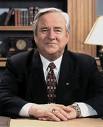
In 1971 conservative Christian Liberty U. (Lynchburg Baptist College until 1971, Liberty Baptist College until 1976) is founded by Baptist pastor Jerry Lamon Falwell Sr. (1933-2007), founder of the Moral Majority in 1979; the sports teams are called the Liberty Flames; courses incl. Young Earth Creationism; in 2009 it launches an online univ., which gains 100K students.
In 1971 Paris Descartes U. is founded in Paris, France, becoming one of France's top research univs.
On May 18, 1990 in the face of heated student protests, the trustees of all-female Mills College in Oakland, Calif. (founded in 1852 in Benicia, Calif.) vote to rescind their earlier decision to admit men; in 2004 they begin welcoming transgender students who self-identify as women.
In 2004 the London Times pub. its first annual Times Higher Education World Universities Rankings; in 2016 the top five are Oxford U., Caltech, Stanford U., Cambridge U., and MIT.
On Feb. 23, 2011 Amir Kabir U. and the Industrial U. of Isfahan in Iran open two supercomputer centers in a ceremony led by Pres. Imadinnajacket.
In 2011 the first Massive Open Online Courses (MOOCs) are offered by Stanford U., MIT, and Harvard U.